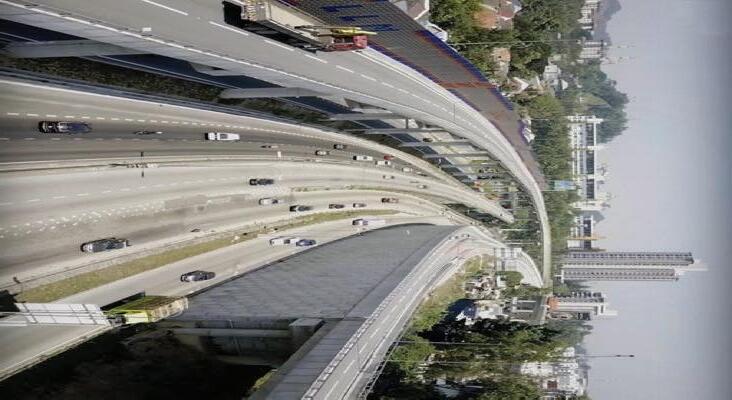



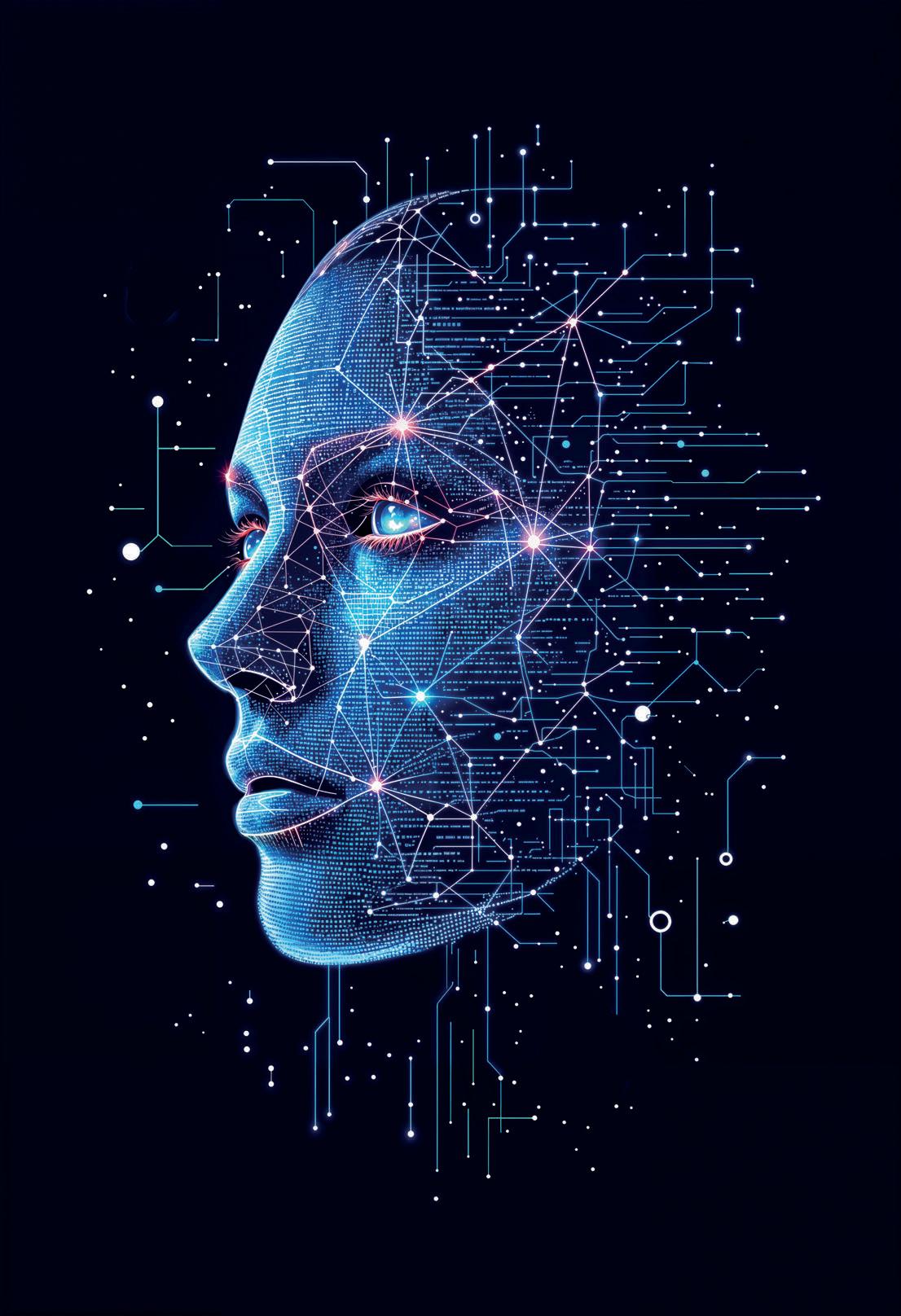
www.myiem.org.my www.myiem.org.my







www.myiem.org.my www.myiem.org.my


Circulation & Readership Profile
3,200/page
3,200/page
The publisher reserves the right to edit, revise or reject any advertisement deemed unsuitable or inappropriate. •
This one-time-only special rate o er is for new advertisers.
Space availability is subject to booking on a first-come-first-served basis.
Clients will provide ready-to-print artwork in PDF format with 300dpi.
Full page: 210mm x 297mm, 3mm extra bleed sizes for 4-sided.
Advertising space must be utilised before 31 December 2025.
*Please note that the above rate will be subjected to 8% SST. For overseas advertisers, an additional 25% will be charged.
Rate shown above excludes 15% advertising agency commission.
Payment term: Full advance payment.
Artwork submission deadline is on (or before) the 1st week of the prior month of publication.
After the material deadline, no cancellation or alteration to the advertisement will be entertained.
Any cancellation after signing the advertising order will result in a 50% penalty charge.
JURUTERA has an estimated readership of 200,000 professionals. Our esteemed readership consists of certified engineers, decision making corporate leaders, CEOs, government officials, project directors, entrepreneurs, project consultants, engineering consulting firms and companies involved with engineering products and services.
Publica�on month/s:
Company’s Stamp & Authorised Signature
Date






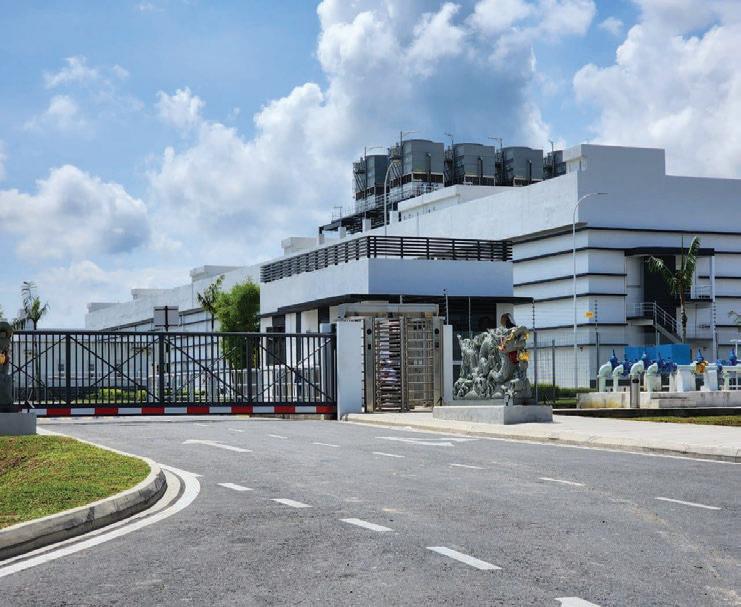





















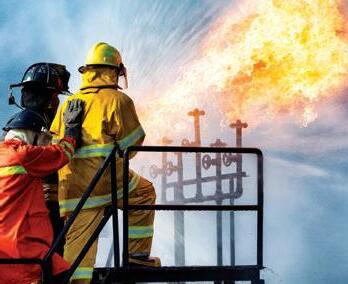


President: Ir. Prof. Dr Jeffrey Chiang Choong Luin
Deputy President: Ir. Yau Chau Fong
Vice Presidents:
Ir. Prof. Dr David Chuah Joon Huang, Y.Bhg. Dato’ Ir. Wan Nazari Wan Jusoh, Ir. Dr Bernard Lim Kee Weng, Ir. Prof. Dr Tan Chee Fai, Ir. Prof. Dr Lau Hieng Ho, Ir. Simon Yeong Chin Chow, Ir. Abdul Razak Yakob
Honorary Secretary: Ir. Chen Harn Shean
Honorary Treasurer: Ir. Prof. Dr Wong Yew Hoong
Immediate Past President: YBhg. Dato’ Ir. Prof. Dr. Norlida Buniyamin
Past Presidents:
YBhg. Datuk Ir. Prof. Ow Chee Sheng, YBhg. Academician Tan Sri Dato’ Seri Ir. Prof. Emeritus Dr Chuah Hean Teik, YBhg. Dato’ Ir. Dr Lim Chow Hock, Ir. Dr Tan Yean Chin, Ir. Ong Ching Loon
Civil Representative: Ir. Tu Yong Eng
Mechanical Representative: Ir. Ng Yong Kong
Electrical Representative: Ir. Mohd. Aman Hj. Idris
Structural Representative: Ir. Dr Tan Kuang Leong
Chemical Representative: Ir. Kim Kek Seong
Representative to Other Disciplines: Ir. Dr Dhakshyani Ratnadurai
Multimedia Representative: Ir. Assoc. Prof. Dr Lai Khin Wee
Women Engineers Representative: Ir. Dr Syuhaida Ismail
Young Engineers Section Representatives: Mr. Lim Yiren, Grad. IEM, Mr. Darshan a/l Balasubramaniam, Grad. IEM, Ms. Ong Ye Shian, Grad. IEM, Mr. Chuah Pei Lim, Grad. IEM, Ms. Nyan Shu Qi, Grad. IEM
Council Members:
Ir. Sharifah Azlina Raja Kamal Pasmah, Ir. Dr Wan Syakirah Wan Abdullah, Ir. Dr Mui Kai Yin, Ir. Shamil Abu Hassan, Ir. Wan Rizaluddin Abdullah Wan Ali, Ir. Dr Aidil Chee Tahir, Ir. Dr Angelia Liew San Chuin, Ir. Prof. Dr Zuhaina Zakaria, Ir. Begum Irdawati Dowlad Rahuman, Ir. Chong Chee Yen, Ir. Khoo Chee Min, Ir. Abdul Razak Yakob, Ir. Dr Chan Swee Huat, Ir. Alex Looi Tink Huey, Ir. Sukhairul Nizam Abdul Razak, YBhg. Dato’ Ir. Ting Chek Choon, Ir. Dr Norashikin M. Thamrin, Ir. Lee Cheng Pay, YBhg. Datuk Ir. Chin Tet Fu @ Willy, Ir. Gs. Br. Dr Zarabizan Zakaria, Ir. Choo Lay Guat, Ir. Dr Siow Chun Lim, Ir. Assoc. Prof. Dr Leong Kah Hon, Ir. Dr Sara Lee Kit Yee, Ir. Chan Wah Cheong, Ir. Dr Marianah Masrie
Council Members by Invitation: YBhg. Dato’ Ir. Dr Hj. Ahmad Sabirin Arshad , Ir. Dr Sanjayan K. V. Velautham, YBhg. Datuk Ir. Ho Hon Sang
Branch Chairman
1. Penang : Ir. Dr Lee Choo Yong
2. Southern : Ir. David Puen Ming Shen
3. Perak : Ir. Dr Tiah Oon Han
4. Pahang : Ir. Harzah Mazni Ramli
5. Kedah-Perlis : Ir. Roshasmawi Abdul Wahab
6. Negeri Sembilan : Ir. Richard Khoo Nee Keong
7. Kelantan : Ir. Hj. Nik Burhanuddin Nik Yusoff
8. Terengganu : Ir. Haji Zakaria Abdullah
9. Melaka : Ir. Lim Su Hian
10. Sarawak : Ir. Dr Angelia Liew San Chuin
11. Sabah : Ir. Mohd Yaakob Hj. Jafar
12. Miri : Ir. Meheron Selowara Joo
Chairman: Ir. Prof. Dr Lau Hieng Ho
Vice Chairman: Ir. Wan Rizaluddin Abdullah Wan Ali
Secretary: Ir. Assoc. Prof. Dr. Hum Yan Chai
Chief Editor: Ir. Prof. Dr Lau Hieng Ho
Principal Bulletin Editor: Ir. Wan Rizaluddin Abdullah Wan Ali
Principal Journal Editor: Ir. Prof. Dr. Teo Fang Yenn
Chairman Webportal: Ir. Assoc. Prof. Dr Hasril Hasini
Resource Centre Chairman: Ir. Tay Siang Hui
Committee Members:
Ir. Lee Chang Quan, Ir. Lau Tai Onn, Ir. Yee Thien Seng, Ir. Dr Tan Kim Seah, Ir. Dr Bhuvendhraa Rudrusamy, Ir. Dr Nor Ilia Anisa Aris, Ir. Ts. Wong Chee Fui, Ir. Dr Moey Lip Kean, Ir. Begum Irdawati Dowlad Rahuman, Ms. Michelle Lau Chui Chui, Ir. Dr Marianah Masrie
Chief Editor: Ir. Prof. Dr. Lau Hieng Ho
Principal Bulletin Editor: Ir. Wan Rizaluddin Abdullah Wan Ali
Committee Members:
Ir. Alex Looi Tink Huey, Ir. Dr Tan Kim Seah, Ir. Razmahwata Mohd Razalli, Ir. Prof. Dr Teo Fang Yenn, Ir. Lau Tai Onn, Ir. Yee Thien Seng, Ms. Michelle Lau Chui Chui, Ir. Ahmad Rafidi Mohayiddin, Ir. Lee Chang Quan, Dr. Sudharshan N. Raman, Ir. Begum Irdawati Dowlad Rahuman
Ingenieur, Lots 60 & 62, Jalan 52/4, P.O. Box 223, (Jalan Sultan), 46720 Petaling Jaya, Selangor Darul Ehsan. Tel: 603-7890 0130 Fax: 603-7957 7678
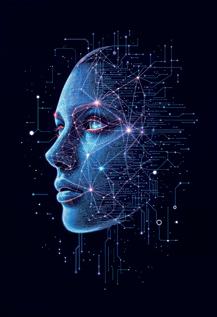


Artificial Intelligence in Cybersecurity
Key Features
Robotics: The Era of Embodied
Engineering the Future: AI and Robotics in the Next Frontier Visit to KONE Elevators (M) Sdn. Bhd.
Prof. Radin Umar Memorial Lecture 2025: Transport Projects Design & Construction














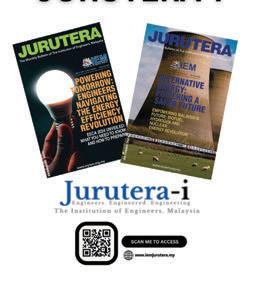
DIMENSION PUBLISHING SDN. BHD. [ 199701034233 (449732-T) ]
Level 18-01, PJX-HM Shah Tower, No. 16A, Persiaran Barat, 46050 Petaling Jaya, Selangor Darul Ehsan, Malaysia. Tel: +(603) 7493 1049 Fax: +(603) 7493 1047
E-mail: info@dimensionpublishing.com Website: www.dimensionpublishing.com
Chairman Robert Mebruer
CEO/Publisher Shirley Tham shirley@dimensionpublishing.com
Head of Marketing & Business Development
Joseph How joseph@dimensionpublishing.com
Production Editor Tan Bee Hong bee@dimensionpublishing.com
Contributing Writers
Putri Zanina putri@dimensionpublishing.com
Hanna Sheikh Mokhtar hanna@dimensionpublishing.com
Senior Graphic Designer
Sofia Hanis Mohd Uzir sofia@dimensionpublishing.com
Graphic Designer Nicole Theng nicole@dimensionpublishing.com
Advertising Consultants
Tham Choon Kit ckit@dimensionpublishing.com
Accounts Cum Admin Executive Yong Yen Yin yenyin@dimensionpublishing.com
For advertisement placements and subscriptions, please contact:
DIMENSION PUBLISHING SDN. BHD. [ 199701034233 (449732-T) ]
Tel: +(603) 7493 1049 Fax: +(603) 7493 1047
E-mail: info@dimensionpublishing.com Website: www.dimensionpublishing.com
Subscription Department
E-mail: info@dimensionpublishing.com
JURUTERA MONTHLY CIRCULATION: OVER 50,000 MEMBERS
Submission or placement of articles in JURUTERA could be made to the: Chief Editor THE INSTITUTION OF ENGINEERS, MALAYSIA (IEM) Bangunan Ingenieur, Lots 60 & 62, Jalan 52/4, P.O. Box 223 (Jalan Sultan), 46720 Petaling Jaya, Selangor. Tel: +(603) 7890 0130 Fax: +(603) 7957 7678 E-mail: pub@iem.org.my Website: http://www.myiem.org.my
JURUTERA is published and printed monthly by Dimension Publishing Sdn. Bhd.
PUBLICATION DISCLAIMER
The publication has been compiled by both IEM and Dimension with great care and they disclaim any duty to investigate any products, process, services, designs and the like which may be described in this publication. The appearance of any information in this publication does not necessarily constitute endorsement by IEM and Dimension. There is no guarantee that the information in this publication is free from errors. IEM and Dimension do not necessarily agree with the statement or the opinion expresssed in this publication.
COPYRIGHT
JURUTERA Bulletin of IEM is the official magazine of The Institution of Engineers, Malaysia (IEM) and is published by Dimension Publishing Sdn. Bhd. The Institution and the Publisher retain the copyright over all materials published in the magazine. No part of this magazine may be reproduced and transmitted in any form or stored in any retrieval system of any nature without the prior written permission of IEM and the Publisher. © 2025, The Institution of Engineers, Malaysia (IEM) and Dimension Publishing Sdn. Bhd.
by Ir. Tejinder Singh Chairman, Consulting Engineering Special Interest Group (CESIG)

Artificial Intelligence (AI), robotics, and cybersecurity are no longer distant frontiers of technological exploration… they are defining forces that shape our economies, industries, and lives. For engineers, they represent not only the future but also a compelling present.
AI systems are transforming how we design, analyse, and manage infrastructure, from intelligent energy grids and predictive maintenance in manufacturing to smart mobility systems and AI-driven healthcare diagnostics. Robotics, with advances in autonomy and human-machine collaboration, is revolutionising sectors such as agriculture, logistics, construction, and elderly care. Meanwhile, as systems become more interconnected, cybersecurity has emerged as a critical discipline to safeguard digital assets, infrastructure, and personal data against increasingly sophisticated threats.
The implications are profound. While these innovations promise greater efficiency, safety, and quality of life, they also raise questions about employment, ethics, data governance, and digital trust. Engineers must not only embrace these technologies but also help lead society in addressing their risks and societal impacts.
This era offers opportunities to reskill, to lead interdisciplinary collaborations, and to shape national policy. Engineers must take a proactive role to ensure these technologies uplift lives while upholding our ethical and professional responsibilities.
by Ir. Ts. Wan Rizaluddin Abdullah Wan Ali Principal Bulletin Editor of Bulletin Editorial Board

In today’s world of technology, three areas stand out as particularly transformative: Artificial intelligence (AI), robotics, and cybersecurity. AI continues to revolutionise industries by enabling machines to learn, adapt, and perform tasks once done by humans. From healthcare to finance, AI is driving innovation and efficiency, making it an indispensable tool.
Robotics is reshaping the way we interact with the physical world. Advances in robotics lead to the creation of more sophisticated and capable machines, opening up new possibilities in manufacturing, logistics, etc.
With these technological advancements, cybersecurity becomes increasingly critical. Protecting sensitive information and ensuring the integrity of digital systems are paramount when cyber threats are constantly evolving. Such measures are essential to safeguard against breaches and attacks.
Indeed, the integration of AI, robotics, and cybersecurity is paving the way to a future where technology enhances our lives in unprecedented ways. As we continue to explore these exciting developments, it is crucial to stay informed and engaged.
Ir. Prof. Dr. Tan Chee Fai, Vice President of the Institution of Engineers Malaysia, conducted this exclusive interview with Prof. Gong Ke for JURUTERA magazine. The conversation highlights Prof. Gong’s insights into the transformative role of AI in engineering, ethics, and sustainable development across global and ASEAN contexts.
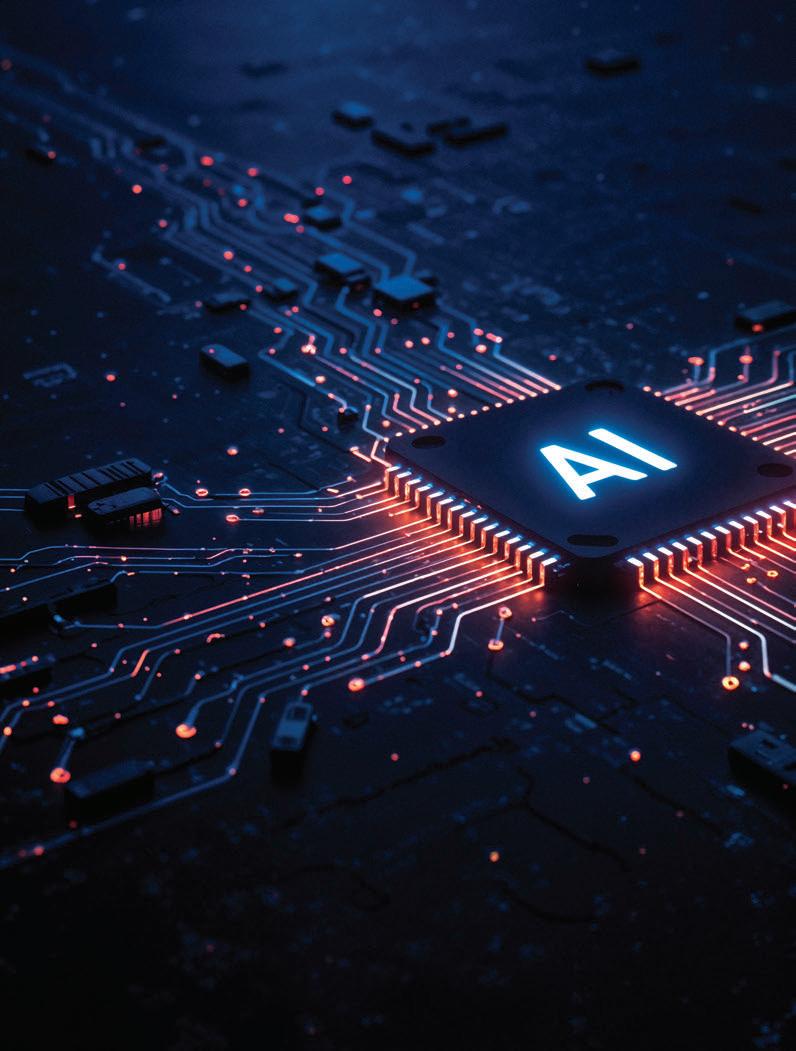
Artificial Intelligence (AI) is redefining engineering by shifting the profession from traditional technical roles to strategic leadership in sustainability and innovation. As part of the 4th Industrial Revolution, AI enables predictive maintenance, smart infrastructure, and real-time optimisation across sectors such as manufacturing, urban planning, agriculture, and healthcare. It provides developing nations, especially in Asia and the Global South, with opportunities to leapfrog into advanced industrial capabilities.
Strategically aligning AI with the UN Sustainable Development Goals (SDGs) allows engineers to apply technology for social good, improving energy efficiency, reducing waste, and expanding access to critical services. Key initiatives include AI-powered digital twins for urban resilience, smart agriculture platforms for food security, and ethical AI applications in public service delivery.
However, the transformative potential of AI must be balanced with strong ethical governance. Fairness, transparency, accountability, and data privacy must be embedded into AI-driven engineering practices to avoid reinforcing bias or deepening inequality. Engineering education, therefore, needs urgent reform, focusing on AI literacy, interdisciplinary collaboration, and responsible innovation.
International engineering bodies play a pivotal role in bridging the digital divide through capacitybuilding, global standards harmonisation, and cross-border knowledge exchange. With ethical leadership and inclusive innovation, engineers can harness AI as a catalyst for a more equitable and sustainable global future.
From a global perspective, how is artificial intelligence (AI) redefining the role of engineers in shaping tomorrow’s society and industries?
AI is reshaping engineering by augmenting human capabilities and automating routine tasks. Historically, engineers transitioned from craftsmen to operators of mechanical, electrical, and digital systems during the successive industrial revolutions. Today, AI fuels the 4th Industrial Revolution (4IR), merging physical, digital, and biological systems.
In manufacturing, AI enables predictive maintenance such as engine diagnostics (Rolls-Royce) while tools like GitHub Copilot automate routine coding, allowing engineers to focus on innovation and system architecture. This mirrors earlier shifts where engineers delegated manual work to machines.
For Asia and the Global South, AI offers a leapfrogging path toward industrial competitiveness. China’s Belt & Road Initiative uses AIpowered digital twins to plan and manage infrastructure. Singapore’s Virtual Singapore models climate resilience for smart urban planning. Indonesia’s Gojek applies AI to optimise transportation and logistics in real time.
These examples highlight how engineers are evolving from implementers to strategic leaders — driving sustainable, tech-enabled development.
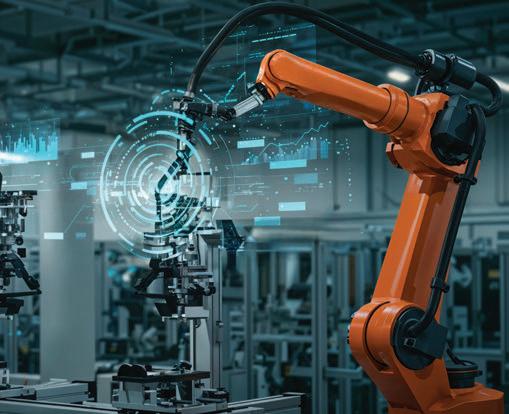
How can AI be strategically aligned with the UN Sustainable Development Goals (SDGs) to drive sustainable engineering solutions globally? AI must be strategically aligned with the UN SDGs to serve as a catalyst for equitable and sustainable engineering solutions. The 2023 UN General Assembly resolution on AI (A/RES/78/523) and the 2024 Global Digital Compact (GDC) emphasise that AI should be used to advance
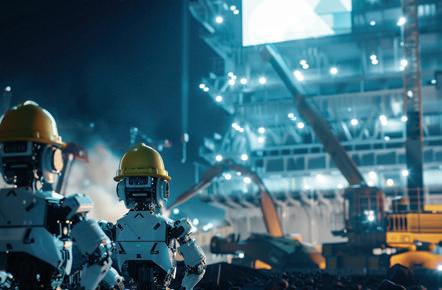
sustainable development, not merely technological progress.
The GDC’s call for “inclusive, people-centred AI governance” offers a foundation for ethical engineering. Examples include China’s AI-powered digital twins for energy optimisation and disaster preparedness (SDGs 7 and 11), and Malaysia’s e-PALM platform, which applies AI to reduce agricultural waste (SDG 12) and uplift smallholders (SDG 1).
AI also expands access to critical services. India’s Ayushman Bharat Digital Mission uses AI to improve healthcare distribution (SDG 3), while Japan integrates AI into renewable energy management (SDG 7). These initiatives embody the UN’s vision of “AI for social good”.
To ensure ethical use, engineers must uphold transparency, fairness, and accountability. Embedding bias detection in housing systems (SDG 11) or ensuring algorithmic fairness in credit scoring (SDG 10) demonstrates responsible AI use.
By aligning AI with the SDGs, engineers can transform innovation into a driver of global inclusion, sustainability, and systemic progress.

You’ve contributed to the UNESCO AI ethics framework. What ethical responsibilities must engineers uphold in the design and deployment of AI technologies?
The UNESCO Recommendation on the Ethics of AI, unanimously adopted by member states, is the first global standard-setting document addressing ethical responsibilities in AI. It outlines four core values which engineers must uphold: Human rights, environmental sustainability, diversity and inclusion, and peace and justice. These principles are
essential, as biased algorithms, opaque systems, and unsustainable AI deployment can intensify inequality, discrimination, and ecological damage — undermining trust and progress toward the UN SDGs.
The Recommendation includes 10 principles, several of which are directly relevant to engineering.
Proportionality and Do No Harm: AI must be used appropriately and avoid harming human rights and well-being.
Fairness: Engineers must ensure AI systems are unbiased by using diverse datasets and rigorous
validation, especially to protect vulnerable communities.
Transparency: AI models should be explainable, open-sourced when possible, and developed with input from marginalised groups.
Accountability: Clear frameworks for responsibility must be established, e.g. auditing AI in energy systems to meet SDG 7.
Privacy: Data protection must be embedded by default, such as anonymising personal data in Smart City systems.
By integrating these principles and conducting ethical impact assessments, engineers can transform AI into a driver of inclusive, sustainable, and rights-based global development.
What key reforms should be made in engineering education to ensure that the next generation of engineers are AI-literate, ethically grounded, and innovation-ready?
As the AI-represented 4IR transforms the engineering profession, it also drives the transformation of engineering education. Engineering education must undergo three pivotal reforms to equip future engineers as AI-literate, ethically grounded innovators.
1. Integration of AI and Machine Learning: AI and machine learning should be integrated into the core engineering curriculum for all engineering disciplines, complemented by mandatory courses on AI ethics, data governance, and the UNESCO Recommendation principles.
2. Active Use of AI Tools in Education: AI tools should be actively used in engineering education, allowing students to learn AI by solving real problems. Innovation ecosystems must be nurtured through agile pedagogies. Introduce designthinking labs, entrepreneurship modules, and industry hackathons (e.g. WFEO’s World Engineering Day Hackathon) to simulate rapid prototyping and SDG-aligned innovation.


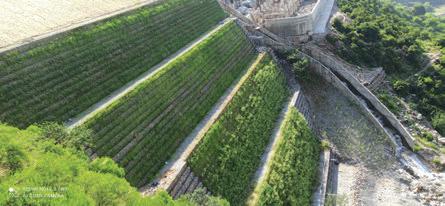



Ethical training should be strengthened and embedded across programmes. Courses must explore the societal implications of AI, referencing frameworks like the Global Digital Compact, to ensure engineers prioritise resilience, inclusivity, and sustainability.
By aligning curricula with AI and related content, using AI tools and global ethical frameworks, fostering interdisciplinary collaboration, and prioritising agile innovation, engineering education can produce professionals who harness AI as a force for equitable, sustainable
progress — transforming technology from a tool of efficiency into a catalyst for human-centric development.
In the context of digital inequality, how can international engineering bodies support developing nations in building AI capacity and infrastructure? International engineering bodies can bridge digital inequality by leveraging global networks to empower developing nations in AI capacity-building.
The World Federation of Engineering Organisations (WFEO) is leading the Engineering Capacity Building for Africa Programme
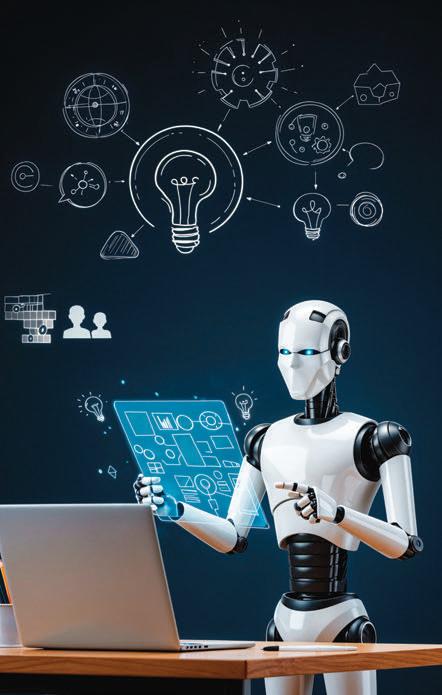
(ECBAP) to support African engineers in advancing AI integration. Backed by UNESCO, UNIDO, UNEP, UNDP, UN DESA, UNU, and engineering institutions such as the China Association for Science & Technology (CAST), UK’s Royal Academy of Engineering, and IEEE, the initiative fosters collaborative growth.
In partnership with the Institution of Engineers of Kenya, the first pilot training, AI in Engineering Practice, was held from March 10 to 14, 2025, training 50 industry engineers and achieving impactful outcomes.
As part of the UN’s International Decade of Science for Sustainable Development, ECBAP focuses on AI+Engineering competencies across education, professional development, and technology adoption. It aims to establish localised Engineering Capacity Development Centres across Africa for sustained growth.
To ensure inclusion, global engineering bodies should prioritise knowledge equity. Tools such as UNESCO’s AI Competency Framework offer open-access content in AI ethics, governance, and technical skills. Context-specific training, co-designed with institutions in Africa or South-East Asia, can mirror Singapore’s AI Singapore initiative which upskills engineers in ethical AI use.
Through collaboration with multilateral agencies such as the World Bank, international engineering organisations are advancing infrastructure projects such as solar-powered data centres and community 5G networks, aligned with the Global Digital Compact’s universal connectivity goal. Pilot projects such as India’s AI-driven GatiShakti logistics platform and Malaysia’s e-PALM for sustainable agriculture showcase scalable, inclusive AI applications which can be adapted across the Global South. By advancing such strategies, international engineering bodies can transform digital gaps into bridges for equitable innovation, ensuring that AI becomes a global tool for inclusive progress rather than a driver of disparity.
Beyond technical skills, what new competencies — such as systems thinking, ethics, and cross-disciplinary collaboration — are essential for engineers in the AI era?
In the AI era, engineers must cultivate competencies that transcend technical expertise, focusing on sustainable development considerations, ethical awareness and skills, and inter-disciplinary, inter-cultural, and international collaboration to address complex, interconnected global challenges.
• Sustainable Development Considerations as Systems Thinking: Engineers need to keep firmly in mind that sustainable development consideration is the overarching goal of humankind, so that they can think systematically to align all engineering practices with sustainable development goals, which are defined in economic, social, and environmental dimensions.
• Ethical Awareness and Skills of Implementing Ethical Principles: As stewards of technology, engineers must embed UNESCO’s AI ethics principles such as fairness, transparency, and accountability, into every engineering practice, from planning, design, research and development, production/ manufacture, application, maintenance, and management. The WFEO Codes of Ethics provides a practical guideline for all engineering professions. Certifications like IEEE’s Ethically Aligned Design can institutionalise these practices, preventing harm and building public trust.
• Inter-Disciplinary, InterCultural, and International Collaboration: AI and digital technologies are generalpurpose technologies, which are breaking down traditional disciplinary barriers and enabling people to better meet complex challenges such as climate
change with cross-disciplinary and global features. In this context, competencies in interdisciplinary, intercultural, and international cooperation become essential for future engineers.
• Lifelong Learning & Adaptability: Rapid AI evolution requires engineers to embrace continuous upskilling in emerging fields, ensuring engineers remain innovation-ready. By prioritising these competencies, engineers can harness AI as a tool for inclusive progress, transforming technical prowess into a force for equitable, sustainable development in an interconnected world.
Can you share examples of how AI is currently being applied in infrastructure design or climate resilience planning to achieve sustainable outcomes?
AI is revolutionising infrastructure design and climate resilience planning by enabling data-driven, sustainable solutions. Here are some examples:
• Infrastructure Design
Digital Twins for Smart Cities: Singapore’s Virtual Singapore project uses AI-powered digital twins to simulate urban systems, optimising energy grids, transportation, and waste management. It is reported that this reduces carbon footprints by 20% in pilot zones and enhances resource efficiency.
AI-Optimised Construction
Materials: MIT’s AI-generated concrete mixtures cut carbon emissions by 30% by identifying sustainable material ratios. Similarly, Autodesk’s generative design tools create lightweight, structurally efficient buildings with 50% less material waste.
Smart Grids: Germany’s E.ON and California’s Pacific Gas & Electric deploy AI to balance renewable energy (solar/wind) with demand, dynamically balancing the capacity of generating, distributing, and storing, while reducing fossil fuel reliance by 40% during peak hours.
• Climate Resilience Planning
Flood Prediction & Management: Bangladesh’s Flood Forecasting Warning System uses AI to analyse river levels and rainfall data, providing 72-hour flood alerts and reducing casualties by 60%. The Netherlands’ Delta Program employs AI to model storm surges and adjust coastal defenses dynamically.
Agricultural Efficiency: John Deere’s AI-driven tractors optimise planting patterns, cutting water use by 25% and fertiliser use by 30% in India’s Punjab region, while boosting yields by 15% according to media reports.
Deforestation Monitoring: Global Forest Watch (GFW) uses AI to analyse satellite imagery, detecting illegal logging in the Amazon in near real-time and enabling rapid law enforcement responses.
• Cross-Cutting Innovations
Traffic Optimisation: Hangzhou established the City Brain system to reduce congestion and emissions significantly by dynamically adjusting traffic lights.
Disaster Response: After Turkey’s earthquakes in 2023, AIdriven damage assessment analysed drone footage to prioritise rescue efforts, saving 30% more lives than traditional methods.
These applications demonstrate AI’s role in achieving net-zero transitions, resource efficiency, and community resilience. By integrating AI with the UN SDGs, engineers are designing infrastructure that is not only functional but also adaptive to climate challenges.
What role can global platforms such as WFEO play in harmonising AI standards, fostering innovation, and encouraging cross-border collaboration in engineering? Global platforms such as the WFEO play a critical role in ensuring AI supports ethical, inclusive, and sustainable engineering. By harmonising standards, driving innovation, and fostering crossborder collaboration, WFEO can help align AI with the UN SDGs.

Prof. Dr. Gong Ke is an electronics engineer with more than 30 years of experience in ICT, engineering education, AI, and global leadership. A Past President of WFEO and active since 2009, he has strongly advocated the role of engineering and AI in advancing the UN Sustainable Development Goals. As Chair of the China National Committee of WFEO, he led China’s engagement in AI-related global initiatives. He also served on the UN Secretary-General’s Scientific Advisory Board, promoting collaboration with international bodies and the responsible use of AI for sustainable development.
1. Harmonising AI Standards: WFEO can unify the engineering community by aligning AI practices with UNESCO’s Recommendations and UN frameworks. Engaging experts from diverse regions such as Africa’s innovation ecosystems or ASEAN’s smart city initiatives, WFEO can co-develop contextsensitive standards across sectors including infrastructure, healthcare, manufacturing, and disaster resilience. For instance, certifying AI tools such as digital twins for flood modelling ensures they meet safety, equity, and environmental benchmarks. WFEO can also advance interoperability by promoting harmonised data and algorithm standards, addressing fragmentation caused by inconsistent national policies.
2. Fostering Innovation: WFEO can catalyse innovation through AI challenge grants and global engineering hubs. In partnership with the UN and private sector, it could support initiatives like AI-enabled precision farming or carbon-efficient construction solutions. The WFEO Engineering
Innovation Network can host global hackathons, enabling engineers from Lagos to Jakarta to co-develop AI tools for sustainable development and climate resilience.
3. Cross-Border Collaboration: WFEO can build inclusive global AI ecosystems. A proposed Global AI Ethics Database could document real-world applications, such as India’s fairhiring algorithms or Turkey’s disaster-response AI, promoting knowledge sharing. Initiatives like the Engineering Capacity Building for Africa Program (ECBAP) demonstrate WFEO’s potential to support mutual recognition of AI competencies, enhancing talent mobility. Aligning with frameworks such as the Global Digital Compact ensures equitable deployment of AI infrastructure, like 5G-enabled grids and solarpowered data centres.
4. Balancing Innovation and Regulation: To lead AI integration responsibly, engineers must balance innovation with ethical, legal, and safety standards:
• Ethical-by-Design: Embed UNESCO’s principles of fairness, transparency, and accountability. Tools such as IBM’s AI Fairness 360 help detect bias, while the EU’s AI Act requires algorithm explainability in sensitive domains.
• Risk Mitigation: Use red-team testing to simulate threats, and include fail-safe mechanisms in autonomous systems, adhering to ISO standards.
• Global Standards Harmonisation: Develop cross-border ethical certification schemes. Modular AI systems can meet varying regulations (e.g. GDPR in Europe, China’s AI Guidelines).
• Multi-Stakeholder Collaboration: Co-design AI tools with policymakers, ethicists, and communities. Kenya’s Ajua platform, for instance, involves farmers in developing AI-based crop insurance tailored to local needs.
• Education and Advocacy: Expand programmes such as ECBAP to enhance AI literacy, equipping engineers to navigate innovationethics trade-offs.
• Life-cycle Accountability: Apply AI Impact Assessments across system life-cycles and use technologies such as blockchain to ensure traceability, as practised in Estonia’s e-Governance Academy.
By embedding these strategies into engineering practices, WFEO can position engineers as ethical innovators, ensuring that AI evolves as a driver of sustainable, inclusive global progress.
What is your long-term vision for a globally connected, AI-empowered engineering community, and what must we do today to realise that vision responsibly?
My long-term vision is that a globally connected, AI-empowered engineering community will act as a collective problem-solving network and a collaboration platform, transcending borders to design and implement equitable, sustainable solutions for humanity’s grand challenges.
In this future, it will be characterised by democratised AI access, embedded AI ethics, effective and collaborative AI innovation, agile AI governance, and interoperable AI standards and rules.
To realise this vision responsibly, engineers must lead, not just as technologists, but also as architects of global trust. We must work hard to innovate AI tools, establish global ethical standards, promote and build open-source infrastructure, foster international collaboration, reform engineering education, strengthen engineering capacity building especially for developing countries and vulnerable communities, and engineer a world where AI amplifies humanity’s highest potential rather than exacerbating its fractures. The path forward requires wisdom, courage, humility, and urgency.



























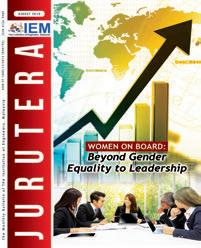

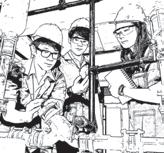





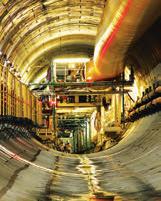


































by:

Ir. Tejinder Singh
Leads a consultancy specialising in energy efficiency, automation, AI, and cybersecurity. With over 30 years of experience across diverse sectors, he is also an expert in bridging electrical energy and cybersecurity.
In an era where technology permeates every facet of human life, cybersecurity has emerged as one of the most critical concerns of the digital age. Cyberattacks have grown exponentially in sophistication, complexity, and impact, affecting governments, businesses, and individuals worldwide. Simultaneously, artificial intelligence (AI) has evolved as a powerful tool, transforming industries across the globe. Among its many applications, the role of AI in cybersecurity is particularly noteworthy as it presents both unprecedented opportunities and significant challenges. This article explores the impact of AI on cybersecurity and its broader implications for society.
The digital world is constantly under siege by cybercriminals seeking to exploit vulnerabilities in networks, applications, and human behaviour. The threat landscape includes malware, ransomware, phishing, denial-of-service attacks, and data breaches. These attacks not only result in financial losses but also threaten the integrity of critical infrastructures, personal privacy, and even national security. As the attack vectors grow more advanced, traditional cybersecurity tools, based on static rules and human oversight, are increasingly inadequate.
The ransomware attack on Colonial Pipeline, carried out using the DarkSide strain, led to fuel shortages across the U.S. east coast. The attackers accessed the company’s systems via a compromised VPN password, showing how critical even simple credentials can be. The industrial control systems weren’t directly hit, but the incident revealed the fragility of OT/IT interdependence. Solution Insight. Modern AI-enhanced SIEM tools like IBM QRadar or Splunk Enterprise Security would have detected anomalous remote access patterns and flagged the breach much earlier.
Enter AI. AI is rapidly reshaping cybersecurity by leveraging its ability to detect, analyse, and respond to threats with greater speed and accuracy than human teams alone can manage. The potential of AI to bolster cybersecurity efforts is immense, and its integration into security systems can be the key to managing an increasingly complex cyber environment.
Impact on Cybersecurity: Enhancing Defence Mechanisms. One of the most significant contributions of AI in cybersecurity is its ability to automate and enhance threat detection. Unlike conventional rule-based systems, AI can learn from large datasets, identify anomalies, and detect unknown threats. Machine learning (ML), a subset of AI, excels at analysing massive amounts of data, finding patterns, and flagging suspicious activities in real-time. As attackers continue to evolve, AI-driven systems can adapt, improving detection rates and reducing false positives, which have historically plagued traditional security systems.
For example, AI-based intrusion detection systems can monitor network traffic, identify unusual patterns, and predict potential threats before they happen. This predictive capability allows organisations to take proactive measures, thus minimising the damage caused by cyberattacks. Additionally, AI-powered security tools can analyse logs, user behaviour, and endpoint activity to identify insider threats, which are often difficult to detect using traditional methods.
Example Tool: Darktrace. Darktrace’s Enterprise Immune System leverages unsupervised ML to baseline normal operations and detect deviations autonomously. In industrial environments, it can flag unusual traffic from SCADA systems, preventing sabotage or downtime.
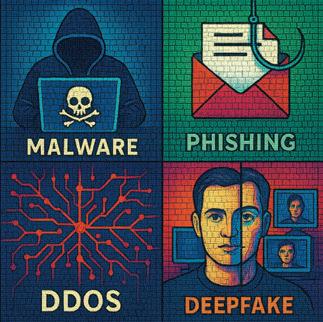

Triton targeted Schneider Electric’s Triconex safety controllers at a petrochemical plant in Saudi Arabia. The goal was not data theft, but rather to disable safety systems, endangering lives.
AI-Based Solution Strategy. Tools like Claroty xDome and Nozomi Networks Guardian, which specialise in industrial cybersecurity, use AI to monitor protocol integrity and identify malicious firmware or command injections in real-time.
Another area where AI excels is in vulnerability management. Organisations often struggle to keep up with the thousands of vulnerabilities discovered annually. AI can quickly scan and prioritise these vulnerabilities based on their severity, enabling security teams to focus on the most critical issues. This automation reduces the time and effort required for human analysts to sift through massive volumes of security alerts and threats, thereby improving the overall efficiency of cybersecurity teams.
While AI holds great promise in defending against cyber threats, it also poses new risks. Just as cybersecurity professionals can use AI to enhance defence systems, cybercriminals can weaponise AI to launch more sophisticated attacks. AI-driven malware, for instance, can autonomously identify and exploit vulnerabilities, evade detection, and adapt its behaviour in response to countermeasures. This emerging trend of AI-assisted cyberattacks presents a worrying challenge for the future of cybersecurity.
Example: Business Email Compromise via Deep Learning. In 2019, cybercriminals used an AI-generated voice to impersonate a German CEO and trick a UK-based energy firm into transferring US$243,000. This synthetic audio attack was nearly indistinguishable from a real call.
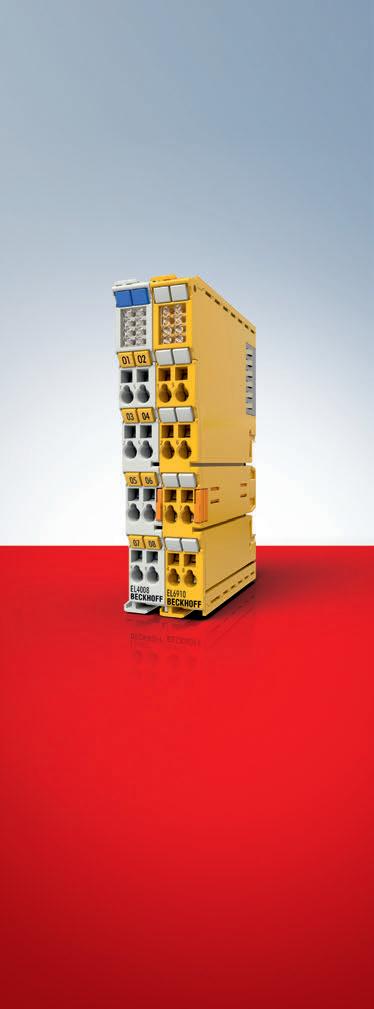

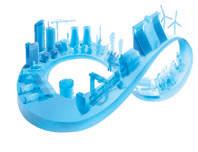










Emerging Risk. AI models such as OpenAI Codex or Google’s DeepMind AlphaCode can also be abused to write polymorphic malware, a code that constantly rewrites itself to evade detection.
Deepfakes, which use AI to create realistic yet fake audio and video content, are another example of AI’s offensive potential. These forgeries can be used to manipulate public opinion, defame individuals, or create fraudulent documents, undermining trust in digital content. The growing use of AI in social engineering attacks, such as phishing campaigns, adds another layer of complexity, as attackers can craft more convincing and personalised messages to deceive individuals.
Adversarial attacks are another worrying trend, where attackers use AI to manipulate other AI models. By feeding malicious inputs designed to fool an AI system, attackers can bypass security protocols. This is particularly concerning for AI-driven systems that make critical decisions, such as biometric authentication systems or autonomous systems in critical infrastructure.







Societal Implications of AI-Driven Cybersecurity. The integration of AI into cybersecurity not only transforms how we defend digital systems but also has broader implications for society at large. One of the most pressing concerns is the issue of privacy. AI-powered systems require vast amounts of data to function effectively, raising questions on how that data is collected, stored, and used. While these systems can enhance security, they also have the potential to infringe on individual privacy by collecting sensitive information without adequate oversight or regulation.
Job Disruption vs. Job Creation. Roles such as log analysts or threat reporters may be automated. However, demand is surging for:
• AI Cybersecurity Architects
• Prompt Engineers for LLM security
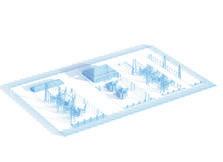

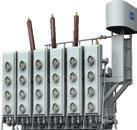




• AI Governance and Risk Analysts
It is also likely to create demand for new roles that focus on developing, managing, and maintaining AI systems. Ensuring that the workforce is prepared for this transition will be crucial in avoiding large-scale job displacement.
Ukrainian substations have repeatedly been attacked with malware such as Industroyer. These attacks show the real-world impact of cyber-physical threats on energy delivery systems.
Resilience Measure. AI can be embedded into predictive maintenance systems in substations to monitor voltage/frequency fluctuations caused by cyber disruptions, potentially preventing grid destabilisation.
Another societal implication is the growing dependency on AI in critical infrastructure. AI is increasingly being integrated into sectors such as healthcare, finance, transportation, and energy. While this can improve efficiency and security, it also makes these systems more vulnerable to AIdriven attacks. A cyberattack on AI-controlled power grids, transportation networks, or healthcare systems can have catastrophic consequences, leading to significant disruptions and loss of life.





Furthermore, the rise of AI in cybersecurity also poses challenges for employment. AI-driven automation may reduce the need for certain jobs in cybersecurity, such as manual threat monitoring and analysis. However, it is also likely to create demand for new roles that focus on developing, managing, and maintaining AI systems. Ensuring that the workforce is prepared for this transition will be crucial in avoiding large-scale job displacement.
As AI continues to play a more prominent role in cybersecurity, it is essential to address the ethical implications of its use. The development of AI should prioritise transparency, accountability, and fairness. Clear guidelines and regulations are needed to ensure that AI systems are used responsibly, protecting both individual rights and societal interests.
AI systems, by their nature, are only as good as the data they are trained on. If the data is biased, the AI system will produce biased outcomes. In cybersecurity, biased algorithms can lead to unequal protection of certain groups or the disproportionate targeting of specific demographics. For instance, facial recognition algorithms used in security may exhibit racial or gender bias, leading to unfair discrimination. As AI systems are increasingly embedded in decision-making processes, addressing these biases becomes crucial to ensure fairness and equity in cybersecurity.
Moreover, as AI technologies evolve, international cooperation will be critical in establishing norms and standards for AI use in cybersecurity. Cyber threats do not respect borders, and a coordinated global approach will be necessary to combat the increasing threat of AI-assisted attacks.
As AI gains influence, so too must regulation. For instance:
• The EU AI Act categorises biometric surveillance as high-risk.
• Malaysia’s MyDIGITAL Blueprint emphasises ethical AI development in public services.
Facial recognition systems used in access control may misidentify minorities due to training data biases. These need to be corrected with federated learning techniques and diverse datasets.
The fusion of AI and cybersecurity offers transformative potential for defending against an evolving cyber threat landscape. AI’s ability to detect, analyse, and respond to threats with unprecedented speed and precision can significantly enhance security measures. However, the societal implications of AI-driven cybersecurity, ranging from privacy concerns to employment shifts, must be carefully managed. As AI becomes more embedded in both offensive and defensive cyber strategies, it is essential that policymakers, businesses, and cybersecurity professionals ensure that its development and deployment are guided by ethical considerations and robust oversight. Only then can society fully reap the benefits of AI while mitigating its potential risks.


With Malaysia accelerating toward digitalisation via IR4.0 and initiatives like Smart Manufacturing and Smart Grid, engineers must:
1. Integrate AI in SCADA and DCS systems with cybersecurity-by-design.
2. Champion AI ethics in engineering councils.
3. Upskill in AI cybersecurity tools and methodologies through CPD programs.
[1] McAfee. (2021). The hidden costs of cybercrime. Retrieved from McAfee Report
[2] Microsoft. (2020). AI & Cybersecurity: Insights and Innovations. Retrieved from Microsoft Security Blog
[3] ENISA. (2021). Artificial Intelligence and Cybersecurity: Threats, Risks and Opportunities. Retrieved from European Union Agency for Cybersecurity




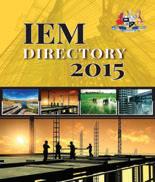
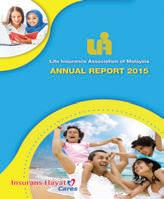

















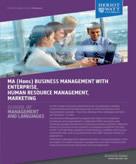























Extracts from Smart & Sustainability Working Group presentations during the yearly Conference of the ASEAN Federation of Engineering Organisations (CAFEO 42)
by:

Ir. Kesavan Jaganathan
Current chair for Smart & Sustainable Cities Working Group under CAFEO representing IEM and the Secretary of CESIG.
This article is based on my earlier presentations at the Conference of the ASEAN Federation of Engineering Organisations (CAFEO) for the past 8 years (starting from CAFEO-36, 2018). Presentations at the CAFEO events were done on behalf of the Institution of Engineers, Malaysia (IEM) as I was leading the IEM Working Group for Smart & Sustainable Cities. One of the objectives of this presentation is how engineers can play their roles towards the development of Smart & Sustainable Cities.
Objectives of Smart & Sustainable Cities Working Group
Policies are in place on Smart & Sustainable Cities within all ASEAN countries and for the respective states within the countries. How do we move in parallel with these policies and become a pillar/think-tank for this with our pool of resources/ engineers?
• To work together with the relevant government bodies to ensure engineering institutions are included in the policy making team.
• To work together with other professional bodies such as the Architects, Landscape, Land Surveyors, Master & Urban Planners, Quantity Surveyors and other relevant stakeholders etc.
• Development of Guidelines & Standards among member countries.
• Overview on achievable targets among member countries.
Smart & Sustainable Cities encompass the following major factors:
• Social.
• Environmental.
• Economic.
Focusing on one aspect alone will not significantly achieve these goals. Smart & Sustainable Cities are used as one approach to resolve urbanisation issues and to improve the quality of life for city dwellers. It adds intelligence to the urban world and is used to achieve a higher quality of life. Engineering, Information & Communication Technology is core to Smart & Sustainable Cities.
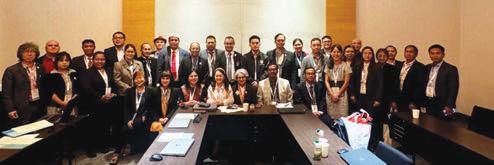
The agenda for global Smart & Sustainable Cities is as follows: Sustainable Development Goals (SDG) and UN Habitat (Kuala Lumpur Declaration of Cities 2030).
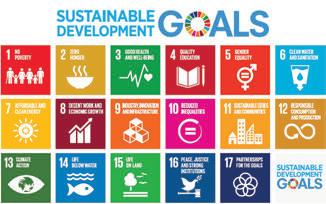
In Malaysia, the list below shows some of national agendas:
• The Ministry of Housing and Local Government (KPKT) launched a Smart City Framework in 2019 which supports all the Malaysia Plans thereafter.
• National Physical Plan 3 (NPP3).
• National Urbanisation Policy 2 (NUP2).
• Green Technology Master Plan 2017-2030.
• Low Carbon Cities Framework.
• Various other policies within each state and Municipality. Based on the above, various Smart & Sustainable Cities have been planned and ironed out throughout Malaysia and ASEAN nations with their own respective policies. The layout below identifies some of the future ASEAN Smart & Sustainable Cities taking shape.
There have been attempts to rate these Smart & Sustainable Cities. Each ASEAN country varies in its preparedness to develop such cities which are mainly dependent on existing infrastructure and socioeconomic conditions. The ratings are also subject to priorities given to such developments within each ASEAN nation.
The following are recent initiatives in Malaysia:
• Artificial Intelligence (AI) Driven Smart Cities: A recent launch by Malaysian Digital Minister Y.B. Gobind Singh Deo. This initiative is supported by Digital National Berhad (DNB) to provide 5G infrastructure to enable real-time data exchange for AI-driven city applications. This is also in line with the AI Cities Initiative by MDEC, DNB and National AI Office, to be implemented from Q2 2025 onwards. The AI City Initiative is a programme to accelerate adoption of and to harness AI technologies to optimise city efficiency and improve the people’s quality of life. Malaysia plans to have a national smart city command centre by the end of 2025 (information based on MDEC website).



• Putrajaya: 5G-enabled autonomous buses with highdefinition cameras and real-time Vehicle-to-Everything (V2X) technology.
• Kuching, Sarawak: Development of hydrogen-powered rail free smart trams as part of a phased rollout of autonomous rapid transit vehicles.
• Smart City Integrated Operation Centre: A central hub for coordinating and monitoring Smart & Sustainable City initiatives.
• Smart City Dashboard: A tool for visualising and analysing data related to Smart & Sustainable Cities project.
• Malaysian Urban Observatory (MOU): A research initiative focused on understanding and addressing urban challenges.
• Various other initiatives within Kuala Lumpur, Cyberjaya, Iskandar, Selangor, Penang and Melaka.
A major part of planning for Smart & Sustainable Cities are done by Master Planners and Urban Developers. This contributes to the early concept stage of city planning.
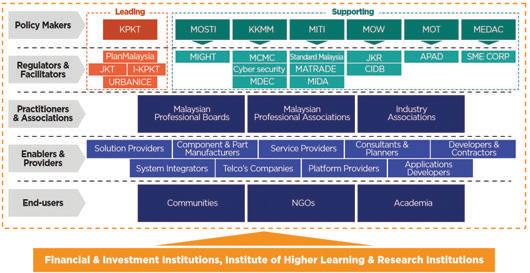
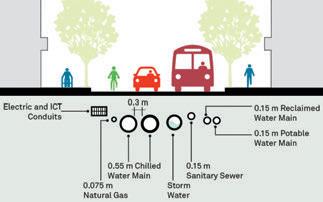
Engineering Professionals. Involvement by engineers at the early planning stage will ensure that engineering aspects of Smart & Sustainable Cities concepts are incorporated early. This includes the planning input by civil, infrastructure, utilities and transportation engineers. Mechanical and electrical engineers can make plans for trigeneration where power supply, water supply, wastewater and other utility services can be centrally managed to achieve efficient use of resources. Where related and necessary, district energy/cooling, de-centralised energy, hydrogen infrastructure, 5G network or other renewable energy can be implemented. Engineers too can ensure sufficient clean rivers are maintained with river restoration measures and recycling facilities where necessary.
Engineers will need to allow sufficient utility corridors during the planning stage for roads and bridges. Early involvement during the planning or concept stage is crucial and will ensure sustainability aspects of the infrastructure design are not overlooked.
Engineers can either play an active or supporting role in the ecosystem as shown in the table above. At the level of policy makers, engineers usually play a supporting role. However, they can play active roles by being part of the regulators/authorities, practitioners & associations, enablers & providers and end-users.
• Malaysia Smart City Framework.
• Putrajaya Smart City Blueprint.
• Smart Selangor Blueprint.
• Smart City Iskandar Malaysia.
• Mysmart Wilayah.
• Penang 2030.
• Sarawak Digital Economy Strategy.
• Cyberjaya Smart Low Carbon City.
• ISO 37122 – Sustainable Cities & Communities –Indicators for Smart Cities.
• ISO 37120 – Sustainable Development of Communities.
• ISO 37123 – Standards for Resilient Cities Indicators –still under development.
• IEC 63152 – Under IEC, Smart Cities developing best practice tool for city planners, guidelines to sustain city services after a disruption.
• EEE P2784 (Smart City Planning Guide) & various standards for smart grid, smart energy, smart health, smart mobility & transportation, smart education and smart governance.
• Other related global initiatives:
• Smart Cities Council: A global coalition of leading technology companies and a global network of public sector smart city practitioners.
• Leadership in Energy and Environmental DesignNeighbourhood Development (LEED-ND) developed by U.S. Green Building Council (USGBC).
• American Society of Heating, Refrigerating and Air Conditioning Engineers (ASHRAE) MOUs with USGBC.
• Sufficient water supply: Wastewater recycling, stormwater re-use, and rainwater harvesting.
• Reliable electricity supply: Renewable energy sources, energy management, smart meters, energy efficiency & green buildings, hydrogen infrastructure, and nuclear power.
• Sanitation: Includes solid waste management, waste to energy, wastewater treatment, waste to compost, and recycling of electronic waste.
• Efficient urban mobility and public transport: Intelligent traffic management, smart parking, non-vehicle streets/ zones, use of non-motorised transport (walking/ cycling), and pedestrian friendly pathways.
• Affordable housing, especially for the poor.
• Robust IT connectivity and digitalisation: Gather and analyse data using Internet of Things (IoT), devices such as sensors, cameras, lights, and meters. Cloud computing helps connect different cities and stakeholders with improved citizen involvement and
better governance, especially e-governance and providing real-time information on city operations.
• Good governance, especially e-governance, public information, electronic service delivery, and citizen engagement.
• Sustainable environment.
• Safety and security of citizens, particularly women, children and the elderly, video crime monitoring, face recognition, and cybersecurity.
• Health and education: Tele-medicine, e-education, and skills development centre.
• By 2050, about 70% (currently 60%) of the global population are estimated to be residing in cities (UN).
• What is alarming is the fact that cities use less than 2% of the earth surface and yet consume more than 75% of the natural resources available globally.
• Other characteristics of Smart & Sustainable Cities are:
• Resilient City.
• Green City.
• Low Carbon City.
• Inclusive City.
• Healthy City.
• Circular City.
• A city in which the capacity of individuals, communities, institutions, businesses, and systems enable them to survive, adapt, and grow in response to chronic stresses and acute shocks.
• How ASEAN cities are adapting to climate change and moving to a sustainable future: Climate change such as managing flash floods in Malaysia and typhoons in the Philippines are some of the examples.
• Sustainability: What are the alternatives to economic growth? Can solar farms and sustainable agriculture be a good remedy?
• Growth without economic growth: Economic growth is closely linked to increases in production, consumption and use of resources which leads to detrimental effects on the natural environment and human health. Societies need to rethink what is meant by growth and progress and their meaning for global sustainability.
• Renewable energy is supposed to result in reduced environmental pressures; Are clearing green areas for solar farming the right approach?
• City models based on approaches to functional and ecological urban development design, provide healthy and sustainable environments for both natural systems and communities.
• One such example is the Nature-based solutions in Europe: Policy, knowledge and practice for climate change adaptation and disaster risk reduction.
• Access to green urban areas within minutes on foot.
• Bio and electronic waste: Turning challenges into opportunities.
• Forest Green Belt: A natural system to preserve and restore.
• Tools to support green infrastructure planning and ecosystem restoration.
• Mapping of sea ecosystems.
• Urban atlas for access to green areas in cities.
• City that has achieved or is moving towards achieving low-carbon practices in all its aspects including its economy and daily life (e.g., travel, politics and culture).
• Transport: Train or plane?
• Cutting greenhouse gas emissions through circular economy actions in the building sector.
• The first and last-mile: The key to sustainable urban transport. Does the MRT in the Klang Valley meet the last-mile challenges?
• A city in which the processes of development include a wide variety of citizens and activities that engage spatial, social and economic inclusion.
• The sustainability transition in an age of demographic and technological change.
• Drivers of change of relevance for environment and sustainability.
• Are ASEAN nations living within the limits of our planet?
• Sustainability transitions: Policy and practice.
• Unequal exposure and unequal impacts: Social vulnerability to air pollution, noise and extreme weather.
• A city with sufficient physical, social environments and community resources, which enable people to perform all the functions of life to develop their maximum potential.
• City air quality (API level). What is the impact of forest burning to make way for farming?
• Health risks caused by environmental noise especially in cities.
• Clean rivers and water: River restoration such as the River of Life project in the Klang Valley.
• Impact of Covid/Pandemic on the environment: Was this a blessing in disguise?
• A city in which all products and material streams can be brought back into the life-cycle after use, and become a resource for new products and services.
• Digital technologies will deliver more efficient waste management. BIM in construction and real estate are some of the examples.
• A framework for enabling circular business models.
• Benefits of longer lasting electronics.
• Construction and demolition waste: Challenges and opportunities in a circular economy. Malaysian developers are embarking on the circular economy model but progress so far is relatively slow.
On a broader scale, more developments are taking place for net-zero Smart and Sustainable Cities by implementing more renewable energy, nuclear micro reactors and hydrogen infrastructure to power them and AI to bring about more efficiency and seamless operations. In future, we can expect more sophisticated IoT devices that can help manage the resources of a megacity population. On the other hand, the increasing use of interconnected devices and data collection also increases the risk of cyberattacks. We shall explore more on Smart & Sustainable Cities strategy, progress and technologies through my future articles and engagement with the other ASEAN level initiatives.
IEM Council and Management would like to extend our heartiest congratulations to Datuk Ir. Ts. Mohd Yaakob Hj. Jaafar (Branch Chairman, IEM Sabah) for being conferred the Panglima Gemilang Darjah Kinabalu (P.G.D.K.), which carries the esteemed title of “Datuk”, in conjunction with the 74th Official Birthday Celebration of the Yang di-Pertua Negeri of Sabah.



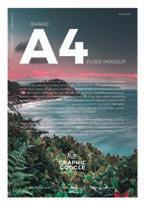


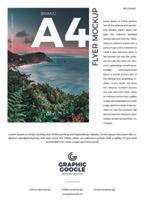



Annual Reports • Booklets • Brochures • Buntings • Business Cards
CD / DVD Replications • Calendars • Cards & Invitations • Certificates
Custom Printings • Envelopes • Folders • NCR Bill Books • Notepads
Leaflets • Letterheads • Paper Bags • Posters • Stickers • Others


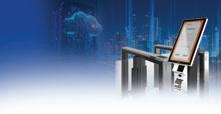

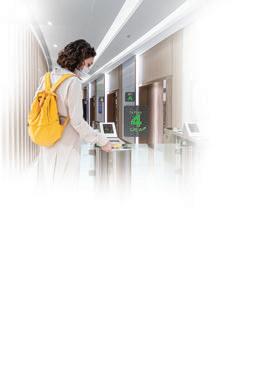
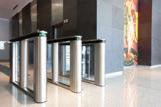

















by:

Ir. Prof. Dr. Tan Chee Fai
Honorary Secretary of IEM for Session 2024/2025 and Deputy Vice-Chancellor of Infrastructure University Kuala Lumpur.
When artificial intelligence (AI) and robotics technology come together in a romantic “union”, robots with generalisation capabilities make a stunning debut, capturing public attention. What kind of remarkable performance can humanoid robots, powered by embodied intelligence, truly achieve? What tasks can they perform, and how will they transform our ways of living and working? What are the core directions of development in the integration of AI and robotics and what challenges and difficulties still remain on this path?
Embodied Intelligence
Embodied Intelligence refers to a concept in AI and robotics where intelligence arises from the interaction between an agent’s body, brain (computation), and environment. It challenges the traditional view that intelligence is purely a function of abstract computation (i.e., just software or algorithms), and emphasises that a physical body and real-world experience are essential components of intelligent behaviour.
The key characteristics of Embodied Intelligence as follows:
Physical Presence (Embodiment): The agent (robot) has a body that senses, acts, and moves in the physical world — through sensors (e.g., cameras, microphones, LiDAR) and actuators (e.g., arms, legs, wheels).
Sensorimotor Integration: Intelligence is shaped by continuous perception-action loops — how the robot perceives the environment and how it acts in response. The brain (AI model) learns through trial and error, adaptation, and feedback.
Situated Learning: Learning happens in context, not from static datasets alone but through interaction with dynamic, unstructured environments. This enables adaptation to change and uncertainty.
Emergence of Behaviour: Intelligent behaviour emerges from the coordination between body, brain, and environment, not from central control alone. For example, walking may be stabilised by not just computation, but also by the robot’s physical design and passive dynamics.
Biological Inspiration: Embodied intelligence draws heavily from cognitive science, developmental psychology, and neuroscience, mirroring how humans and animals learn through embodied experience from infancy.
• SoftBank’s Pepper Robot: Deployed in retail, healthcare, and education, Pepper uses AI for speech recognition, emotion detection, and interactive communication. It has served in roles ranging from greeting customers in stores to assisting in elderly care homes.
• ABB’s YuMi Collaborative Robot (Switzerland): YuMi (short for “you and me”) is designed to work safely alongside humans on electronics assembly lines. It uses AI and advanced sensors to detect human presence and to adjust motion accordingly, supporting Industry 5.0’s vision of human-centric automation.
• UBTECH Robotics – Walker Series (Shenzhen): UBTECH’s Walker S1 humanoid robot is designed for high-dexterity tasks such as object handling, humanrobot interaction, and autonomous navigation. Dozens of Walker robots are now deployed in Zeekr’s 5G smart factory, where they work collaboratively to manage both heavy materials and delicate items, showcasing high adaptability powered by AI.
• Tesla Optimus (Tesla Bot): Introduced as a generalpurpose humanoid robot, Optimus aims to automate repetitive or dangerous tasks in manufacturing and logistics. Tesla leverages its expertise in AI (e.g., Tesla Autopilot) and robotics to build human-like movement and perception.
• Boston Dynamics’ Atlas and Stretch: Atlas is one of the world’s most advanced humanoid robots, capable of parkour, running, and jumping using AI-powered balance and motion planning. Stretch, on the other hand, is designed for warehouse automation, using AI vision to identify and move packages efficiently.
• DOBOT’s Atom: DOBOT’s humanoid robot autonomously performed over 100 complex and dexterous tasks using a variety of tools, including making breakfast, pouring milk, arranging fruit, toasting bread and bacon, plating breakfast, receiving corporate guests, pouring coffee, delivering documents, and collecting packages.
These increasingly vivid and practical cases are rapidly becoming reality, driven by the deep integration of AI and robotics. By enhancing intelligence levels, enabling autonomous learning, promoting natural human-machine interaction, expanding application scenarios, reducing costs, and improving efficiency, embodied intelligence is fundamentally transforming how we live and work.
1. Technical Bottlenecks
a) Perception and Recognition
Robots must accurately perceive and understand their environment, but current sensors and computer vision technologies still face limitations in complex and dynamic environments.
b) Decision-Making and Planning
AI algorithms still need improvement in making real-time decisions and planning paths in complex scenarios, especially where uncertainty and variability are high.
c) Autonomous Learning
Despite major advances in machine learning and deep learning, robots still have limited capabilities for autonomous learning and adaptation in real-world environments.
2. Hardware Limitations
a) Computational Power
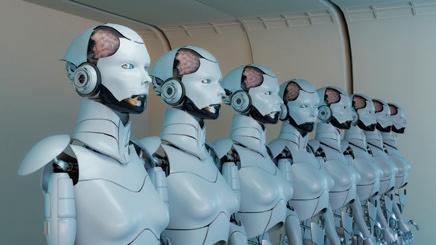
In addition, widespread deployment raises various ethical concerns, such as accountability, fairness, and transparency.
AI algorithms often require powerful computing resources, but embedded systems in robots typically have limited computing capacity, making real-time processing difficult.
b) Energy Management
Power supply and battery life are key challenges, especially for robots that need to operate for extended periods.
c) Mechanical Design
Robotic hardware must balance flexibility, durability, and cost, placing high demands on mechanical design and material selection.
3. Data and Algorithms
a) Data Quality
The performance of AI algorithms depends heavily on the quality and quantity of training data. Obtaining highquality, diverse datasets remains a major challenge.
b) Algorithm Robustness
The robustness and generalisation of AI algorithms in realworld applications need improvement, particularly when facing unfamiliar or abnormal situations.
c) Real-Time Performance
Many application scenarios demand real-time processing and response, which requires highly efficient algorithms and adequate computing resources.
4. Human–Robot Interaction
a) Natural Interaction
Achieving natural and intuitive interaction between humans and robots is a major challenge, particularly in speech recognition, emotion recognition, and gesture control.
b) User Experience
Enhancing the user experience and making AI robots easy to use and accept is a key development goal.
5. Safety and Ethics
a) Safety
Ensuring that AI robots perform tasks safely, without causing harm to people or the environment, involves fault detection, fault tolerance, and emergency handling.
b) Privacy and Ethical Issues
Since AI robots often need to collect and process large amounts of data, protecting user privacy is critical.
The core direction of integrating AI with robotics technology is to promote the evolution of robots from simple automation to intelligent, autonomous, and collaborative systems. This development centres on six key areas:
1. Deep Integration of Perception and Cognition
A key frontier in AI-powered robotics is the seamless integration of multimodal perception and cognitive reasoning, enabling robots to understand and respond to their environments with human-like intelligence. By fusing data from multiple sensors (including vision, touch, speech, and LiDAR) robots gain a richer, more accurate understanding of complex and dynamic settings. For instance, autonomous vehicles like Tesla’s Autopilot utilise multi-sensor fusion to construct real-time environmental models, while service robots such as Boston Dynamics’ Spot combine visual and LiDAR data for precise obstacle avoidance. Beyond sensing, semantic understanding and reasoning empower robots to interpret scenes at a higher level, such as recognising object attributes, intentions, and contextual cues. In logistics, warehouse robots like Amazon’s Kiva system use AI not only to classify goods but also to plan optimal paths in real time, demonstrating how perceptual intelligence can directly enhance operational efficiency. This deep integration of sensing and cognition is foundational to the next generation of intelligent, autonomous machines.
As robots increasingly operate in unpredictable and dynamic real-world environments, their ability to make autonomous decisions and execute real-time planning has become critical. Advanced AI algorithms such as reinforcement learning and imitation learning, empower robots to adapt swiftly to changing conditions and environmental uncertainties. For instance, industrial robots like ABB YuMi optimise complex assembly processes by continuously adjusting actions based on real-time feedback.
Likewise, DJI’s enterprise drones autonomously navigate challenging terrains, supporting applications such as infrastructure inspection and environmental monitoring. Beyond individual autonomy, AI also enables multi-robot coordination, where swarms of robots collaborate on tasks like search and rescue missions or logistics automation. These advancements represent a key leap toward truly intelligent robotic systems, not only reactive, but also proactive and collaborative in complex operational scenarios.
3. Human–Robot Collaboration and Natural Interaction
Modern robots are increasingly designed to collaborate safely and naturally with humans. Technologies like force control and AI-based prediction enable safe physical interaction, allowing collaborative robots (e.g., UR robots) to work alongside humans on factory floors. Through natural language processing (NLP), robots can understand and respond to spoken commands, as seen in guide robots like Cheetah Mobile’s Leopard Assistant. Additionally, affective computing equips robots with the ability to recognise and respond to human emotions, enabling applications such as educational robots that adapt teaching strategies based on facial expressions.
4. Autonomous Learning and Continuous Evolution Robots are becoming increasingly capable of learning and evolving through interaction with their environments. Few-shot learning allows them to adapt to new tasks with minimal data, for instance, industrial robots learning to handle newly introduced parts. Through lifelong learning, robots like household cleaning units continuously refine their performance based on environmental changes. Additionally, transfer learning enables knowledge gained in one scenario, such as assembly on one production line, to be applied across different contexts. These capabilities are paving the way for more flexible, intelligent, and adaptable robotic systems.
5. Flexible and Modular Design
The integration of AI is driving advancements in robot flexibility and modularity, enabling robots to adapt to diverse and unstructured environments. Soft robotics, inspired by biological forms like octopuses, allows robots to navigate complex spaces, ideal for applications such as medical endoscopy or disaster response. Meanwhile, modular reconfiguration enables robots to dynamically switch functions; for instance, robotic arms can alternate between welding and material handling tasks. These innovations enhance versatility, reduce downtime, and expand the operational range of intelligent robotic systems.
To support real-time responsiveness and energy efficiency, modern robots are increasingly equipped with edge intelligence and optimised power management. Lightweight AI models, such as TinyML, enable robots to process data locally, allowing tasks such as on-site video analysis by security patrol robots without relying on cloud connectivity. Simultaneously, AI-driven energy efficiency management helps extend operational life; for example, agricultural drones can dynamically adjust their flight paths to conserve battery power. These capabilities
are essential for deploying autonomous robots in remote, resource-constrained, or time-critical environments.
The fusion of AI and robotics is driving a new era of intelligent machines capable of adapting to real-world complexities. Key advancements include the deep integration of perception and cognition, enabling robots to understand and reason about their environments, autonomous decision-making and real-time planning for dynamic operations, and safe, natural human-robot interaction through language and emotional intelligence.
Robots are also gaining the ability to learn continuously, apply knowledge across contexts, and evolve with experience. At the hardware level, flexible and modular designs, including soft robotics and reconfigurable systems, enhance adaptability.
Finally, edge intelligence and low-power optimisation ensure real-time performance and energy efficiency, critical for mobile and remote deployments. Together, these breakthroughs are transforming robots into collaborative, perceptive, and resilient agents across industries and daily life.
[1] Russell, S. J., & Norvig, P. (2021). Artificial Intelligence: A Modern Approach (4th ed.). Pearson.
[2] IEEE Spectrum. (2022). The Rise of Embodied AI. https://spectrum. ieee.org/embodied-ai
[3] Pfeifer, R., & Bongard, J. C. (2006). How the Body Shapes the Way We Think. MIT Press.
[4] Boston Dynamics. Spot Agile Mobile Robot. https://www. bostondynamics.com/spot
[5] Amazon Robotics. Kiva Systems Case Study. https://www. aboutamazon.com
[6] Sutton, R. S., & Barto, A. G. (2018). Reinforcement Learning: An Introduction (2nd ed.). MIT Press.
[7] DJI. Enterprise Solutions. https://enterprise.dji.com/
[8] Goodrich, M. A., & Schultz, A. C. (2007). Human–Robot Interaction: A Survey. Foundations and Trends in HCI.
[9] Cheetah Mobile Robotics. Leopard Guide Robots. https://www. cmcm.com/en/robotics/
[10] Silver, D., et al. (2016). Mastering the Game of Go with Deep Neural Networks and Tree Search. Nature.
[11] ECOVACS Robotics. Smart Home Cleaning Robots. https://www. ecovacs.com
[12] Rus, D., & Tolley, M. T. (2015). Design, Fabrication and Control of Soft Robots. Nature.
[13] Yim, M., et al. (2007). Modular Self-Reconfigurable Robot Systems. IEEE Robotics & Automation Magazine.
[14] Warden, P. (2019). TinyML: ML with TensorFlow Lite on Microcontrollers. O'Reilly.
[15] Shi, W., et al. (2016). Edge Computing: Vision and Challenges. IEEE IoT Journal.
[16] Unitree Robotics. H1 and G1. https://www.unitree.com/
[17] UBTECH Robotics. Walker S. https://www.ubtrobot.com/
[18] Honda Robotics. ASIMO. https://global.honda/innovation/robotics.html
[19] KAIST HUBO Robot. https://hubolab.kaist.ac.kr/
[20] PAL Robotics. TIAGo and ARI. https://pal-robotics.com/




On 22 January 2025, Prof. Ir. Dr. Tan Chee Fai, Deputy Vice-Chancellor of Infrastructure University Kuala Lumpur (IUKL), delivered an exclusive webinar for members of the Institution of Engineers, Malaysia (IEM), titled AI 2.0: The Great Beyond.
The session offered a comprehensive overview of the evolution of artificial intelligence, charting its progression from early machine learning foundations to today’s generative, conversational, and reasoning-based systems.
He highlighted transformative AI applications, particularly in healthcare, including AI-powered cancer diagnosis platforms, 3D visualisation tools for X-ray imaging, and the integration of AI chips such as the AMD Ryzen AI 9. The session also showcased recent innovations by global tech leaders — NVIDIA’s Project Digits, Microsoft’s MatterGen, and DeepMind’s AlphaFold — demonstrating AI’s potential to accelerate advancements in science, materials research, and automation.
Case studies from Arizona State University and Grab illustrated AI’s expanding role in education, research, and navigation technologies. Prof. Tan emphasised the importance of understanding the ethical implications of AI, the significance of regulatory frameworks, and the urgent need for engineers to adapt to this rapidly evolving landscape.
The session concluded with a call to action: Engineers must champion responsible AI adoption, contribute to national AI strategies, and lead innovation to enhance productivity, sustainability, and societal well-being.
On 21 January 2025, Ir. Prof. Dr. Tan Chee Fai presented a thought-provoking webinar to IEM members, this time focusing on the rapid development and future prospects of humanoid robots. The session examined how these robots were set to revolutionise key sectors by addressing global labour shortages, improving workplace safety, and enhancing AI-human collaboration.
Case studies featured Tesla’s Optimus, Boston Dynamics’ Atlas, and Ubtech’s Walker S — robots that exhibit significant progress in bipedal movement, manual dexterity, visual systems, and embodied AI. Prof. Tan discussed the core technologies enabling these advancements, including bionic joints, advanced actuators, and AI-driven perception systems.
by:

He introduced a development maturity model ranging from Level 0 (basic mechanical robots) to Level 5 (fully autonomous systems), supported by strategic policies from the US, EU, Japan, and China. Key application areas include manufacturing, logistics, healthcare, and domestic assistance.
Ethical considerations associated with humanoid robotics and which stressed the importance of resilient design, were addressed. He highlighted the integration of digital twins and reinforcement learning as key to improving robotic cognition. The session concluded with a clear message: Malaysian engineers must actively engage in research and development, policy formulation, and industrial implementation to position Malaysia as a leader in the global humanoid robotics landscape.
On 11 March 2025, Ir. Prof. Dr. Tan Chee Fai returned with another exclusive IEM webinar, titled Robot Dog: Unleashed, exploring the evolution, technological foundations, and real-world applications of quadruped robots. Inspired by the mobility of four-legged animals, these robots offer exceptional stability, agility, and adaptability, making them ideally suited for complex, unstructured environments.
Prof. Tan elaborated on the enabling technologies behind these robots, such as sensor fusion, SLAM (simultaneous localisation and mapping), and adaptive control systems, all of which support fully autonomous navigation. The session traced the development of quadruped robotics from the 1960s to cutting-edge innovations from Boston Dynamics (BigDog, Spot, LS3), ANYbotics (ANYmal), Deep Robotics (X20), and Unitree (Go2).
He discussed real-world applications spanning military operations, disaster response, industrial inspections, construction site monitoring, and even elderly care. Technological milestones in modular actuators, mechanical design, and sensory integration were also reviewed, with MIT’s Cheetah robot highlighted as a prime example.
Additionally, the increasing relevance of robot dogs in mitigating labour shortages, performing hazardous tasks, and enabling high-precision operations were emphasised. In conclusion, Prof. Tan urged local engineers to explore the frontiers of robotics innovation by advancing actuator and sensor technologies and harnessing the growing industrial potential of quadruped robots in both public and private sectors.
by:
On 26 April 2025, the Consulting Engineering Special Interest Group (CESIG) and the Electrical Engineering Technical Division (EETD) of The Institution of Engineers, Malaysia (IEM) jointly organised a technical visit to KONE Elevators (M) Sdn. Bhd., Selangor.
KONE is a leading global elevator and escalator manufacturer with headquarters in Finland. It operates in over 60 countries, including Malaysia, with a commitment to sustainability, safety, and digital innovation aimed at enhancing urban mobility.
A total of 35 engineers, consultants, and professionals took part in the visit to explore advancements in vertical transportation, focusing on KONE’s Digital Experience (DX) technologies, energy-efficient systems, and smart building integration. The aim was to provide insights into how KONE integrates engineering, data, and user experience into smart solutions.

Mr. Muhammad Ashiq Marecan
Apart from the sharing of predictive maintenance and future-proof building concepts, one of the key highlights by KONE Malaysia’s engineering team during the site presentation was KONE UltraRope®, a lightweight carbon-fibre hoisting rope which replaces steel cables in high-rise applications. It offers up to 37% reduction in machinery room reaction forces and eliminates upward shaft floor forces, reducing structural load and improving energy efficiency.


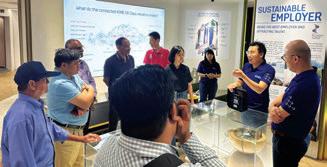
Participants were also introduced to the KONE Elevator Performance Analyser, a 3D sensor-based tool that tracks people movement at each floor in real time without capturing personal data. This supports simulations before and after modernisation, optimising traffic flow and wait times. The team also explained the ISO 25745-2 standards used to classify elevator energy performance under running, idle, and standby conditions. Elevators are rated from Class A (most efficient) to Class G, with actual building load profiles and trip counts used to estimate annual energy use, supporting compliance with green certifications such as Green Building Index (GBI) and GreenRE.
Participants were led to the KONE DX Experience Zone which showcased connected DX Class elevators, equipped with KONE 24/7 Connected Services and IoTenabled sensors for real-time monitoring and predictive
We’re expanding our innovative segmental bridge solutions — BEBO Arch, LS Girder, and MyArch Culvert —to Sarawak and Sabah . Combining durability, efficiency, and sustainability, our designs ensure high-quality infrastructure delivered on time and within budget.
Get in touch today to learn more —let’s build the future, together!

maintenance. These systems allow the integration of multimedia screens, smart lighting, and third-party APIs to customise user experience. The ecosystem approach enables further collaboration between the elevator manufacturer, developers and building owners to optimise digital solutions potential like smart access and emergency features. Hands-on demonstrations covered control panels, brake units, door motors, hoisting machines, and interlocks, highlighting both mechanical and digital elements.
Participants engaged actively during Q&A sessions, discussing elevator life-cycle costs, EMS (energy management system) integration, and real-time performance adjustments. KONE engineers shared approaches for minimising standby energy use and improving building flow using data analytics. The participants appreciated the technical depth and physical access to both hardware and software systems. Many found the experience highly beneficial, particularly those involved in design and consultation for vertical transport and green building projects.
In conclusion, the technical visit offered a valuable platform for experiencing advanced elevator technologies and smart building systems first-hand. It enhanced understanding of sustainable vertical transport solutions, supported professional collaboration, and emphasised the importance of engineering innovation in shaping future urban environments. CESIG and EETD extend their gratitude to KONE Elevators for its warm hospitality and comprehensive showcase.

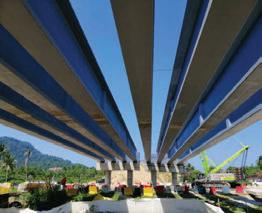
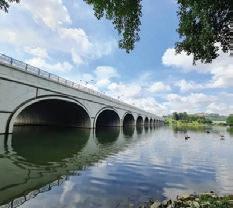

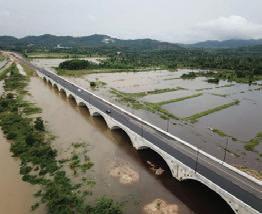

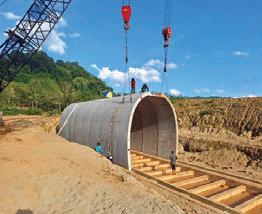




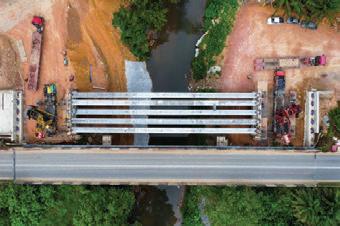

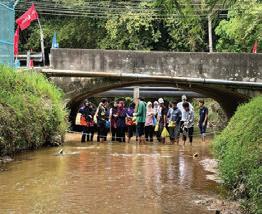




















Annual Reports • Booklets • Brochures • Buntings • Business Cards
CD / DVD Replications • Calendars • Cards & Invitations • Certificates
Custom Printings • Envelopes • Folders • NCR Bill Books • Notepads Leaflets • Letterheads • Paper Bags • Posters • Stickers • Others



On Saturday, 26 April 2025, IEM’s Highway & Transportation Engineering Technical Division (HTETD) hosted the Prof. Radin Umar Biennial Memorial Lecture No. 5 at Wisma IEM. Established in honour of the late Professor Dato’ Ir. Dr. Radin Umar Radin Sohadi, the memorial lecture continues to serve as a platform for advancing discourse on critical issues in transportation engineering and infrastructure management.
This year, the lecture was delivered by Ir. Gandhi Suppiah, a Chartered Engineer and Fellow of the Institution of Civil Engineers (ICE), United Kingdom. Ir. Gandhi is Chairman of ICE Malaysia and Regional Director for SouthEast Asia at TSA Riley. His lecture was themed Transport Projects Design & Construction: Life-cycle Emissions Embodied and Operational Carbon Assessment.
The event started with opening remarks by Ir. Danny Foo Kam Fai, Chairman of HTETD, who welcomed the participants and highlighted the significance of Prof. Radin Umar’s contributions to the field of transportation engineering. Next to speak was Ir. Alex Looi Tink Huey,
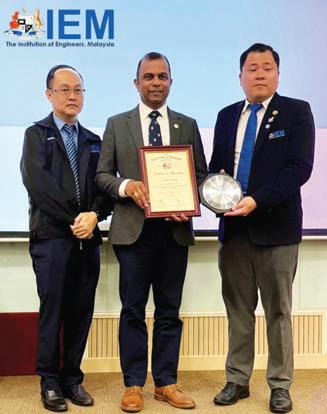
by:

Vice-Chairman of Activities Standing Committee of IEM, who stressed on the importance of sustainable development in shaping the future of infrastructure in Malaysia.
The session offered deep insights into the growing importance of sustainability in transport infrastructure, particularly the need to integrate embodied and operational carbon assessments throughout the entire project lifecycle. Drawing on case studies and global best practices, Ir. Gandhi emphasised the urgency for engineers to embed carbon-conscious decision-making from the earliest stages of project development. He also discussed practical tools and strategies for assessing, managing, and minimising the carbon footprint associated with transport projects, a topic increasingly central to global infrastructure delivery amid climate change commitments.
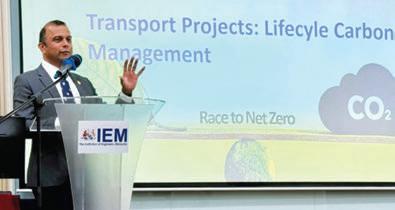
One of the key takeaways from the lecture was the clear message that reducing carbon also leads to reducing costs. Ir. Gandhi also highlighted the importance of early engagement with consultants to optimise designs and to identify carbon reduction opportunities during the conceptual design and planning stages.
The lecture was well-attended by professionals in the transportation and engineering sectors. A lively and engaging question and answer session followed, with participants actively discussing practical challenges, opportunities, and future directions for sustainable infrastructure development. The event concluded with a heartfelt tribute to Prof. Radin Umar’s enduring legacy of leadership, innovation, and commitment to the advancement of our transport system.
IEM and HTETD extend their sincere thanks to Ir. Gandhi for delivering an inspiring and thought-provoking lecture, and to all participants for making the event a success.
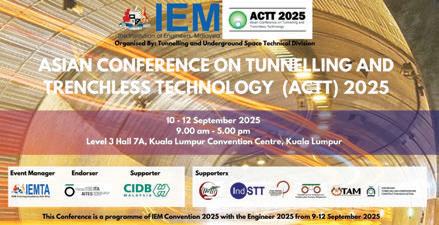
The Institution of Engineers, Malaysia (IEM) is proud to announce that the Asian Conference on Tunnelling & Trenchless Technology 2025 (ACTT 2025), will take place on 10-12 September 2025 at the Kuala Lumpur Convention Centre (KLCC) in Kuala Lumpur, Malaysia. This premier biennial event brings together global leaders, professionals, academics, and stakeholders in the tunnelling and trenchless technology sectors to foster innovation, knowledge exchange, and sustainable solutions for underground infrastructure development.
Its Organising Chairman, Ir. Frankie Cheah, said this conference is special as they have curated special programmes, including a memorial lecture in honour of the founder of IEM’s Tunnelling & Underground Space Technical Division (TUSTD), Ir. Dr. Ooi Teik Aun, a Young Engineer Technical Paper Competition, a site visit and other activities.
“The event is open to all engineering professionals, from young graduates to experienced engineers. We aim to provide a platform for exchanging ideas, showcasing innovation, and advancing the field of tunnelling and underground space technology,” he said.
ACTT 2025 is Asia’s leading platform for showcasing cutting-edge advancements in tunnelling and trenchless technologies. Organised by IEM and endorsed by the International Tunnelling Association (ITA), the conference offers unparalleled opportunities for networking, collaboration, and exposure to transformative technologies. Since its inception in 1994, ACTT had been a trailblazer in promoting sustainable underground infrastructure solutions across Asia.
The conference will feature an exceptional lineup of keynote speakers, including:
• Prof. Dr. Jinxiu (Jenny) Yan, Past President of ITA and a global authority with over 30 years of experience in tunnelling projects in China, Malaysia, Laos, Nepal, and Morocco.
• Ir. Dr. Ooi Lean Hock, a leading geotechnical engineer with extensive experience in major Malaysian projects for Gamuda.
• Ir. Assoc. Prof. Dr. Dominic E.L. Ong, Deputy Dean at Griffith University, specialising in underground space technology and geo-data analytics.
• Dr. Siew Wei Lee, Executive Director at AECOM, with expertise in geotechnical engineering and
tunnelling from Imperial College London and University of Cambridge.
• Datuk Ir. Ts. Richard Anak Tajan, Director of Sewage Services Department, Sarawak, responsible for driving advancements in regional infrastructure.
• Ir. Dr. Tan Yean Chin, a decorated engineer and Co-Founder of G&P Professionals, with leadership roles in major railway and MRT projects.
• Mr. Zaw Zaw Aye, Vice President of SEAFCO, bringing operational expertise in trenchless technology. With an expected attendance of 150200 participants, ACTT 2025 will provide a dynamic platform for industry professionals to explore innovative solutions such as horizontal directional drilling, microtunnelling, and pipe bursting. All these will minimise environmental impact and enhance cost-efficiency.
The event will also feature Asia’s only industry-specific exhibition dedicated to trenchless technology, offering unparalleled visibility for brands targeting influential decision-makers in the Asian market and beyond.
Boosting Malaysia’s STEM Agenda ACTT 2025 aligns seamlessly with the nation’s ambition to advance its Science, Technology, Engineering, and Mathematics (STEM) agenda. By showcasing state-of-the-art trenchless technologies and fostering discussions on workforce development, the conference will inspire the next generation of engineers and technologists. It will highlight the critical role of STEM in addressing real-world challenges, such as rehabilitating ageing infrastructure and promoting sustainable urban development.
The conference will emphasise the need for comprehensive standards, skilled workforce training, and increased awareness of trenchless technologies among decision-makers. This will empower Malaysia to lead in sustainable infrastructure solutions, reducing environmental impact and driving economic growth. By bringing together global expertise, ACTT 2025 will position Malaysia as a hub for innovation in underground space technology, encouraging STEM education and career pathways for young Malaysians.
Conferences such as ACTT 2025 are crucial for big cities like Kuala Lumpur because they promote innovative, low-disruption solutions for urban infrastructure challenges. Trenchless technologies, such as horizontal directional drilling and
microtunnelling, enable the installation and rehabilitation of underground systems such as pipelines and telecommunications with minimal surface disturbance, reducing traffic disruptions, environmental impact, and cost in densely populated areas.
Such conferences foster the exchange of knowledge, showcase cutting-edge advancements, and address the need for skilled workforce training to ensure cities can sustainably manage ageing infrastructure and support rapid urban growth. By bringing together global experts and decision-makers, such events position cities to adopt efficient, eco-friendly technologies which align with modern urban development goals.
Join Us at ACTT 2025 ACTT 2025 is more than a conference — it is a catalyst for innovation, collaboration, and progress in the tunnelling and trenchless technology sectors. Industry professionals, academics, and stakeholders are invited to join this transformative event on Sept 10-11, 2025, at KLCC to shape the future of sustainable infrastructure in Asia and beyond. The highlight of the event will be a technical visit on 12 September 2025.

The Institution of Engineers, Malaysia (IEM) is thrilled to be hosting the 1st ASEAN-China AI Convention from 11-13 September 2025 at the Kuala Lumpur Convention Centre (KLCC). This pioneering event marks a significant milestone in fostering ASEAN-China cooperation in artificial intelligence (AI), driving regional innovation, and accelerating sustainable digital transformation.
Registration opens on 15 July 2025. For more information or to register, contact: Email: ai-iemta@iem.org.my
Contact: +603 7958 2851
Join us in Kuala Lumpur as we shape the future of AI-driven innovation and regional cooperation. Be part of the conversation and the transformation.
ACTT2025 actt_2025
Register for the event at:
For further video content, please visit our official social media platforms: https://iemtasb.weebly.com/actt-2025
Scan to register: or contact: +603 7958 2851
iemactt2025 iemactt
With the theme, Smart, Inclusive, and Sustainable: AI Driving Regional Innovation and High-Quality Development, the event will bring together high-level government officials, industry leaders, renowned engineering experts, academic scholars, and young innovators from across ASEAN and China. The event will explore the transformative potential of AI in various sectors, including manufacturing, logistics, agriculture, energy, healthcare, education, and governance. Key highlights include:
• Ministerial Opening & Keynote: Official launch and strategic vision by ASEAN and China leaders.

• Distinguished Keynote Speakers: Insights into AI ethics, smart manufacturing, and frontier innovations by world-renowned engineering thought leaders.
• Strategic Forums & Fireside Chats: In-depth discussions on the role of AI in sustainability, governance, and regional competitiveness.
• High-Level ASEAN-China Roundtable: A closeddoor leadership dialogue for policy alignment and strategic collaboration.
• Technology Showcase & Exhibition: Cutting-edge AI solutions and innovations showcased by leading tech firms and research institutions.
• ASEAN AI Awareness Certification Programme: A formal training session to empower engineers and professionals with essential AI knowledge.
• Business Matching Sessions: Tailored opportunities to explore cross-border partnerships and investment opportunities.
• Technical Visits: Exclusive tours to Malaysian AI hubs like MRANTI and MIMOS to witness local advancements.
This landmark event, co-located with the Engineering Exhibition & Conference 2025, will reinforce Malaysia’s position as a regional hub for AI innovation and digital transformation.

Without cyber security, there is little use or potential for growth for Artificial Intelligence (AI), data science, automation, IT, OT and IS technology.
The riskiest portfolio in any organisation is that of a cyber security specialist (CSS) because if there is a cyber-attack or a cyber threat, the CSS is the first person to be blamed. This is why good CSSs usually work as consultants, contractors or third parties. But a deeper look will reveal this to be a systematic failure right from day one as the business of a third party CSS may not align with the client’s business objectives.
A company may also require multiple cyber security products at different times. If it uses multiple CSSs, it should have a staff member in the company to manage the overlaps, the gaps and conflicts between the various vendors. Even with multiple cyber security products, there may be gaps open to cyber threats, so the CSS staff members must be able to adjust to and close the gaps. As cyber security defence and cyber-attacks are more an issue of probability than possibility, there will be times when something happens as a result of an oversight or shortcoming, and then it’s back to the blame game. Before deciding on corporate cyber security, all parties (stakeholders, vendors, contractors etc.) must present a picture of what their products can and cannot do.
For example, shown metaphorically in Figure 1, the board of directors must decide what their corporate objectives are and the directions they are heading. In this example, they must decide whether it is 6 or 9. They may finally agree on 7.5 +/- 1.5. However, a “9” stops cyberattacks and a “6” does not. So, what should the CSS do? Take on the risks of the decision or reject the job? Loss of pride by listening to employees or loss of business by trying to be smart, is the actual decision!! A second consideration would be to establish the critical systems and data that the company needs to protect itself.
Some employees may prioritise operational efficiency (minimise personal salary increments and bonuses) over security protocols, not implementing proper training,


Ir. (Dr.) S. Vignaeswaran
by: Chairman of MySITI under Malaysian Society for Engineering & Technology (MySET).
regular system updates, or advanced threat detection mechanisms (to protect corporate profit and survivability). Such actions not only expose organisations to data breaches, financial losses, and reputational damage but also weakens the nation's overall cybersecurity resilience.
Cyber threats are based on the perception and the damages caused. Even the worst virus, if inactive, is not a threat until it starts deleting files, encrypting files, corrupting files etc.
Universality
• Cyber threats can travel and attack globally without regulatory compliance while cyber defences are restricted.
• Cyber threats evolve over time while cyber defences remain mostly static and act only when a certain situation arises.
• Cyber defences do not cover all aspects of an organisation’s operations, systems, departments or hierarchy levels. Cyber threats, however, have no such restrictions.
Targeted Damage
• It is said that cyber threats only need to damage 1% of the system to cause a complete collapse whereas cyber-defences have to ensure 100% system integrity to be successful.
• Multiple cyber threats can work together or independently to attack a specific organisational cyberdefence. Conversely only one cyber defence system deflects attacks from a single or multitude of cyber threats.
Cost Factor
• It is cheaper to create a cyber threat than to put up a cyber-defence system as one will not know which cyber threat will hit next.
• The cost of cyber defence is measured in terms of opportunity cost which is projected, virtual and difficult to quantify given that the event may or may not occur. Yet, cyber threat damages are measured in terms of operational unavailability, lost profits etc.

Technology Issues
• Cyber defences are being implemented in operating systems that do not co-operate fully and seamlessly with other third-party cyber defences. Cyber threats do not have this problem.
• Software versions keep changing, upgrading and updated, making cyber defence complicated and difficult.
• Cyber threats require minimal infrastructure and software to carry out activities but not cyber defence. Available Knowledge
• Cyber defence details are very seldom available due to commercial, financial and legal constraints.
• To put up a cyber defence, one must be qualified, certified and have to invest in such knowledge; cyber threats do not have such requirements.
• Creators of cyber threats do not share the information due to legal implications but a CSS tends to share the knowledge as widely as possible.
Organisational Aspect
• Cyber threats aim at high profile, highly visible targets while cyber defences operate passively below the radar instead of actively looking out for and eliminating cyber threats quickly.
• A CSS for any organisation must know all aspects of the IT and OT systems in detail but not a cyber threat creator.
To solve cyber threats and cyber-attacks, we must adopt new values, culture, approaches and perceptions. Currently, we are playing pickle ball in a swimming pool and complaining about the possibility of drowning and giving excuses for losing.
Cyber threats are proactive and very seldom reactive. As such, cyber threats attack previously identified weaknesses in systems, hardware, software etc. However, most cyber defences are reactive, not proactive. For cyber defence to be proactive, it must know the modes of operations of the hardware, infrastructure, software, applications, systems etc. It must be able to detect any anomaly and make sense of it. While this seems impossible, AI offers hope for cyber security AI agents to police a company’s IT infrastructure continually. However, CSSs may lose their jobs to AI. This may be why AI hasn’t been placed in cyber defence systems in a very extensive and focused way.
In addition, there is no holistic addressing of cyber security without backup, archival and recovery contingency plans being made. All these totally complement and supplement the cyber security approaches and practices as well as limit and complicate the intentions of the cyber-threats.
Cyber defences do not need the internet for their functionality; cyber threats do. It is unfortunate that all systems today are fully connected. Many OT systems can be isolated from the Web as they are very specific to an organisation. Any required data can be communicated via the IT systems, if at all. In addition, the profitability generated by the OT systems should be firewalled from the IT systems and disconnected
from the Internet. The IT system, if Web-enabled, has to be firewalled appropriately. But this highly effective Swiss cheese cyber security model is considered complex to operate, maintain and justify.
The weakest part in cyber defence is its weakest link. Unfortunately, very little effort has been taken to address this. Cyber threats are manufactured by devious, cunning humans while cyber defences are put up by intelligent, smart humans. The important point is that the devious and cunning can use everyday computing hardware, software, practices etc. while the smart and intelligent have to come up with new approaches or solutions.
While antivirus software is essential, it represents just one layer of defence in an increasingly complex digital threat landscape. Cyber threats such as ransomware, phishing attacks, data breaches, and insider threats require a more comprehensive strategy that includes incident response planning, data backup solutions, disaster recovery mechanisms etc.
For highly effective and efficient cyber defence, it must be continually updated, provided with feedback on its performance and effectiveness, and reviewed continuously. Without a shift in mindset and proactive cybersecurity strategies, the local cyber security landscape risks becoming an easy target for increasingly sophisticated global cyber criminals.












by:


In today’s industrial environment, ensuring worker safety is more than just a regulatory requirement. It is a moral and operational necessity. Personal protective equipment (PPE) plays a crucial role in shielding employees from hazards that can result in injury, illness, or even death. Among the many forms of PPE, coveralls stand out as a fundamental piece of protective gear, offering fullbody coverage against a wide range of industrial threats, from fire and chemicals to dirt and mechanical hazards.
Coveralls are particularly important because they serve as a primary barrier between the worker and potential hazards, including heat, chemical splashes, toxic dust, and infectious agents. They not only help prevent direct exposure to harmful substances but also help maintain occupational hygiene standards, reduce contamination, and minimise long-term health risks such as respiratory diseases, chemical burns, and skin irritation.
However, choosing the wrong type of coveralls or using it incorrectly can be as dangerous as having no protection at all. Workers may unknowingly expose themselves to life-threatening situations if the protective properties of the garment do not match the hazards present in their workplace. Thus, understanding
the different types of coveralls and their intended use is critical to maintaining safety and health in the workplace.
Nomex coveralls are engineered for environments where there is a high risk of fire or explosion. Made from inherently flame-resistant fibre, Nomex garments are commonly used in the oil and gas industry, firefighting, aviation, and electrical utility sectors. These coveralls do not melt, drip, or support combustion, which significantly reduces the risk of severe burn injuries and fatalities.
Wearing the correct flameresistant coverall is crucial for workers in fire-prone environments. A regular cotton coverall in such situations would ignite quickly and worsen injuries, putting the worker’s life in danger. In contrast, Nomex provides a life-saving layer of protection, even during flash fires or electrical arcs.
Tyvek coveralls, made from highdensity polyethylene fibre, offer a strong barrier against fine particles, chemical splashes, and hazardous dust. They are widely used in pharmaceuticals, laboratories, vehicle paint shops, and hazardous material handling.
Using Tyvek coveralls in such environments is essential to prevent harmful chemical exposure that may lead to skin conditions, respiratory issues, or chemical poisoning. Additionally, in sterile or controlled environments, they help avoid contamination of sensitive products or experiments. Without proper

chemical-resistant clothing, workers are at risk of absorbing harmful substances through the skin, which may result in both short- and longterm health complications.
Cotton coveralls are typically used in environments with minimal hazard risks. These garments offer comfort and breathability, making them suitable for light manufacturing, construction, warehousing, and maintenance in non-hazardous settings.

Example of Nomex coveralls (source: https://sherwoodsafety.com/ product/nomex-coverall/)

Example of Tyvek coveralls (source: https://www.spi.com/limited-usetyvek-coverall-vco388)
However, it is vital to understand that untreated cotton is highly flammable and absorbs liquids easily, including chemicals and oils. Therefore, using cotton coveralls in high-risk environments can lead to severe health and safety consequences, such as burns or exposure to toxic substances. For slightly higher protection, flame-retardant cotton options are available, but they must be chosen based on proper hazard assessment.

Example of polyester/cotton blend coveralls
(source: https://www. onlineworkwear.com.au/3102polyester-cotton-coverall/)
Blend Coveralls:
Polyester and cotton blend coveralls offer improved durability and tear-resistance while still providing a comfortable fit. These are suitable for daily tasks in vehicle repair, light engineering, and equipment maintenance.
Although not designed for extreme hazards, they offer basic protection from grease, dirt, and minor abrasions, helping to prevent skin irritation and maintaining hygiene over long work hours. They are ideal for jobs with low exposure risk, but not for those involving fire or chemicals.
Disposable coveralls are ideal for environments that demand high hygiene and contamination control, such as clean-rooms, medical labs, and food processing plants. These garments minimise cross-contamination and help protect workers from infectious materials, allergens, or airborne particles.
By wearing disposable coveralls, workers reduce their risk of infection or toxic exposure, especially in environments where biological or chemical contaminants are present. After use, these garments can be safely discarded, further reducing contamination risks.
Arc flash suits are a specialised type of PPE (like coveralls) designed for workers who may be exposed to high-energy electrical faults, particularly in electrical maintenance, power generation, transmission, and distribution.
An arc flash releases a powerful burst of heat and light, reaching temperatures of over 19,000°C which can cause severe burns, hearing loss, and even death within milliseconds. Arc flash suits typically include multi-layered flame-resistant garments, hoods with face shields, gloves, and boots. The materials used are rated based on their
Arc Thermal Performance Value (ATPV) to indicate how much energy the suit can absorb before the wearer sustains injury.
Wearing a certified arc flash suit is vital to prevent catastrophic injuries during electrical faults, especially during live electrical work or fault-finding operations. These suits not only protect against thermal burns but also reduce the risk of eye injuries, hearing damage, and inhalation of toxic vapours caused by electrical explosions.

Example of arch flash suit (source: https:// oberoncompany.com/ product/tcg40-suit-set/)
All PPE used in the workplace must be approved by the Department of Occupational Safety & Health (DOSH) and bear the official DOSH-SIRIM (formerly known as the Standard & Industrial Research Institute of Malaysia) label. SIRIM Quality Assurance Services (SIRIM QAS) International has been appointed the authorised certification body to assess and certify both imported and locally manufactured PPE. This requirement includes the body protection to comply with these standards. Under the Occupational Safety & Health Act 1994 and its associated regulations, classified PPE, whether produced locally or imported, must obtain DOSH approval before it can be placed on the market.
Body protection equipment must comply with recognised international and national standards such as NFPA 2112:2018, BS EN 14605:2005+A1:2009, BS EN ISO 11612:2015, MS 1731:2004, MS ISO 11612:2005, MS ISO 13688:2004, MS ISO 14877:2005, ISO 13688:2013, ISO 14877:2002, ISO 11612:2015, BS EN ISO 139821:2004+A1:2010, BS EN 13795-1:2019, and BS EN 13795-2:2019, ensuring adequate protection against chemical, thermal, and biological hazards in accordance with regulatory and performance requirements.
Selecting the appropriate coverall is a critical decision that directly impacts the safety and health of workers. Each type serves a specific purpose and using the wrong one may lead to serious injury, illness, or long-term occupational health problems. Whether facing flames, chemicals, or particles, workers must be equipped with the correct PPE to ensure complete protection.
Employers must also invest in training and awareness so that employees understand when and how to use different types of coveralls. Ultimately, the right protective gear not only saves lives but fosters a culture of safety, empowering workers to perform their duties confidently and responsibly
To all Members,
Date: 22 June 2025
LIST OF CANDIDATES ELIGIBLE TO SIT FOR THE PROFESSIONAL INTERVIEW FOR THE YEAR 2025
The following is a list of candidates who are eligible to sit for the Professional Interview for the year 2025.
According to the IEM Bylaws, Section 3.8, the names listed below are published as eligible candidates to become Insitution Members, provided that they pass the Professional Interview in 2025.
If there are any Corporate Members who have objections against any candidate deemed unsuitable to sit for the Professional Interview, a letter of objection can be submitted to the Honorary Secretary, IEM. A letter of objection must be submitted within one month from the date of publication.
Ir. Chen Harn Shean IEM Honorary Secretary
NEW APPLICATION
NAME QUALIFICATION
ELECTRICAL ENGINEERING
MOHD AZHAR BIN JUMAT BE (UTM) (ELECTRICAL, 2018)
APPLICATION FOR CORPORATE MEMBER
NAME QUALIFICATION
ELECTRICAL ENGINEERING
CHONG KIM SOON BE (UITM) (ELECTRICAL, 2017) MSc HONS (UKM) (ELECTRICAL, ELECTRONIC & SYSTEM ENGINEERING, 2015) PhD (UKM) (2019)
MECHANICAL ENGINEERING
TAN CHYE FATT DIP (TARC) (MECHANICAL, 1987), ENGINEERING COUNCIL (UK) - PART 1 & 11
MEMBER TRANSFER
MEMBERS NO. NAME QUALIFICATION
CIVIL ENGINEERING
84746 LAI KAR TING BE (UM) (CIVIL, 2016)
27094 MOHD NAZIR BIN LUWI BE (UiTM) (CIVIL, 2009) MSc HONS (UiTM) (INTEGRATED CONSTRUCTION PROJECT MANAGEMENT, 2023)
72913 EWE KEE YIN BE (UKM) (CIVIL & ENVIRONMENTAL, 2016)
70673 NG PENG MUM BE (QUEENSLAND) (CIVIL, 2010)
MECHANICAL ENGINEERING
104289 MUHAMMAD SADIQ BIN MOHD ANIPAH BE (UNITEN) (MECHANICAL, 2013)
TRANSFER TO CORPORATE MEMBER
MEMBERS NO. NAME QUALIFICATION
CHEMICAL ENGINEERING
35655 LIM MIN HUI BE (UTM) (CHEMICAL, 2006)
87663 JENNEY NGU LIM SONG BE (UPM) (CHEMICAL, 2008) MSc HONS (UPM) (CHEMICAL, 2011)
108435 MOHAMAD L. MASLUDIN SYAH BIN SYAMSURI BE (UTM) (CHEMICAL, 2012)
POLYMER ENGINEERING
112331 ABDUL HAMID BIN ABDULLAH BE (USM) (POLYMER, 2008) MSc HONS (USM) (POLYMER, 2012)
CIVIL ENGINEERING
99151 LEW HANG CHUEN BE (QUEENSLAND) (CIVIL, 2014)
28030 LAI TZE KHAI BE (UTM) (CIVIL, 2005) ME HONS (UTM) (CIVIL, 2008)
53601 MOHAMMAD HAFIZI BIN GHAZALI BE (UKM) (CIVIL & STRUCTURAL, 2013)
88890 HII JUN HAO, KENNY BE (SWINBURNE) (CIVIL, 2018)
121313 HIU CHEE HONG BE (SWINBURNE) (CIVIL, 2018)
ELECTRICAL ENGINEERING
36816
A/L SUBRAMANIAM BE (UTM) (ELECTRICAL, 2005)
CHONG SHENG XIN BE (UTAR) (ELECTRICAL & ELECTRONIC, 2016)
The institution expresses its gratitude to all who have contributed to the Wisma IEM Building Fund. IEM members and readers who wish to make a donation may do so by downloading the form from the IEM website at http://myiem.org.my or by contacting the secretariat at +603-7890 0130 / 136 for further information. The list of contributors for May 2025 is as shown in the table below:



